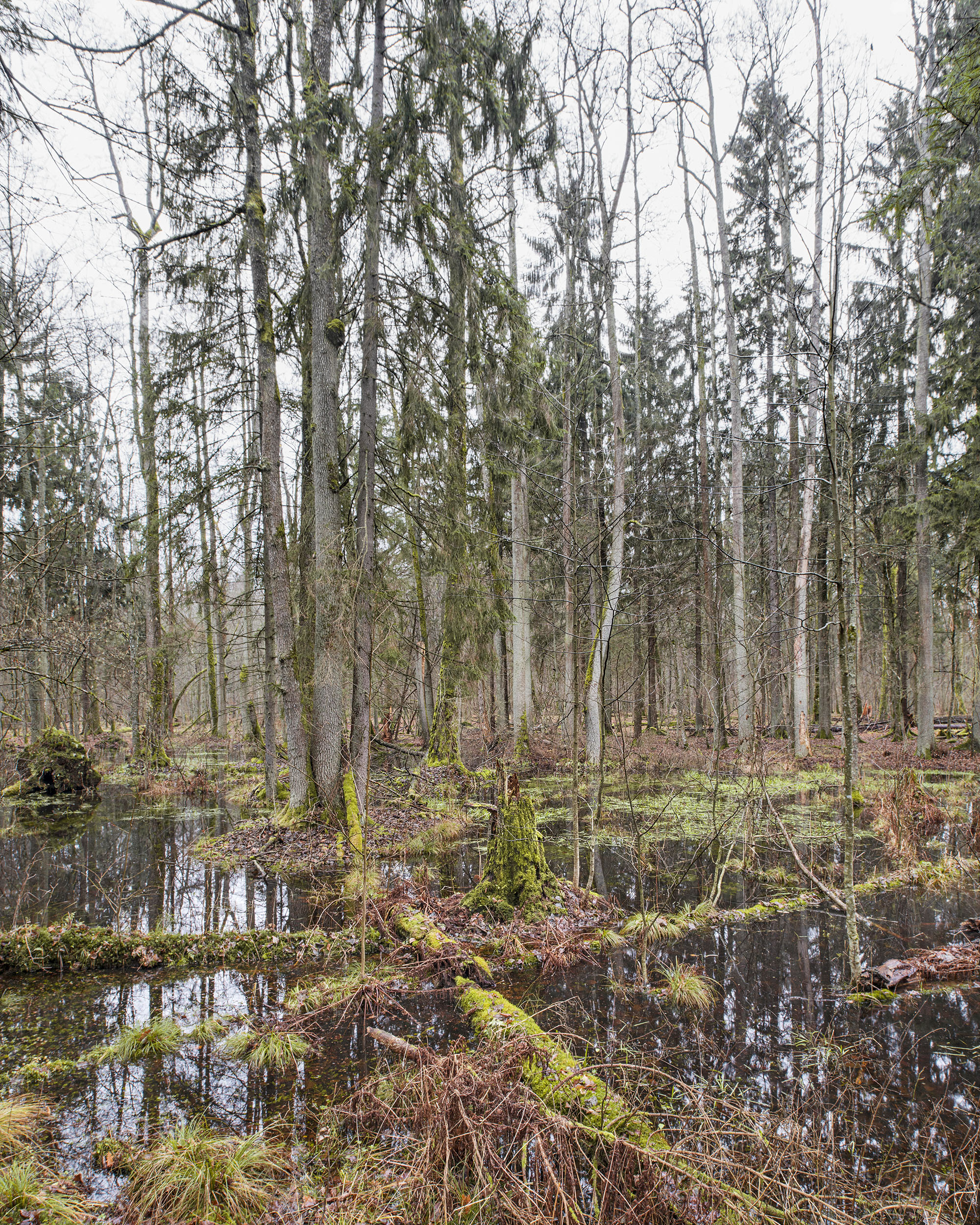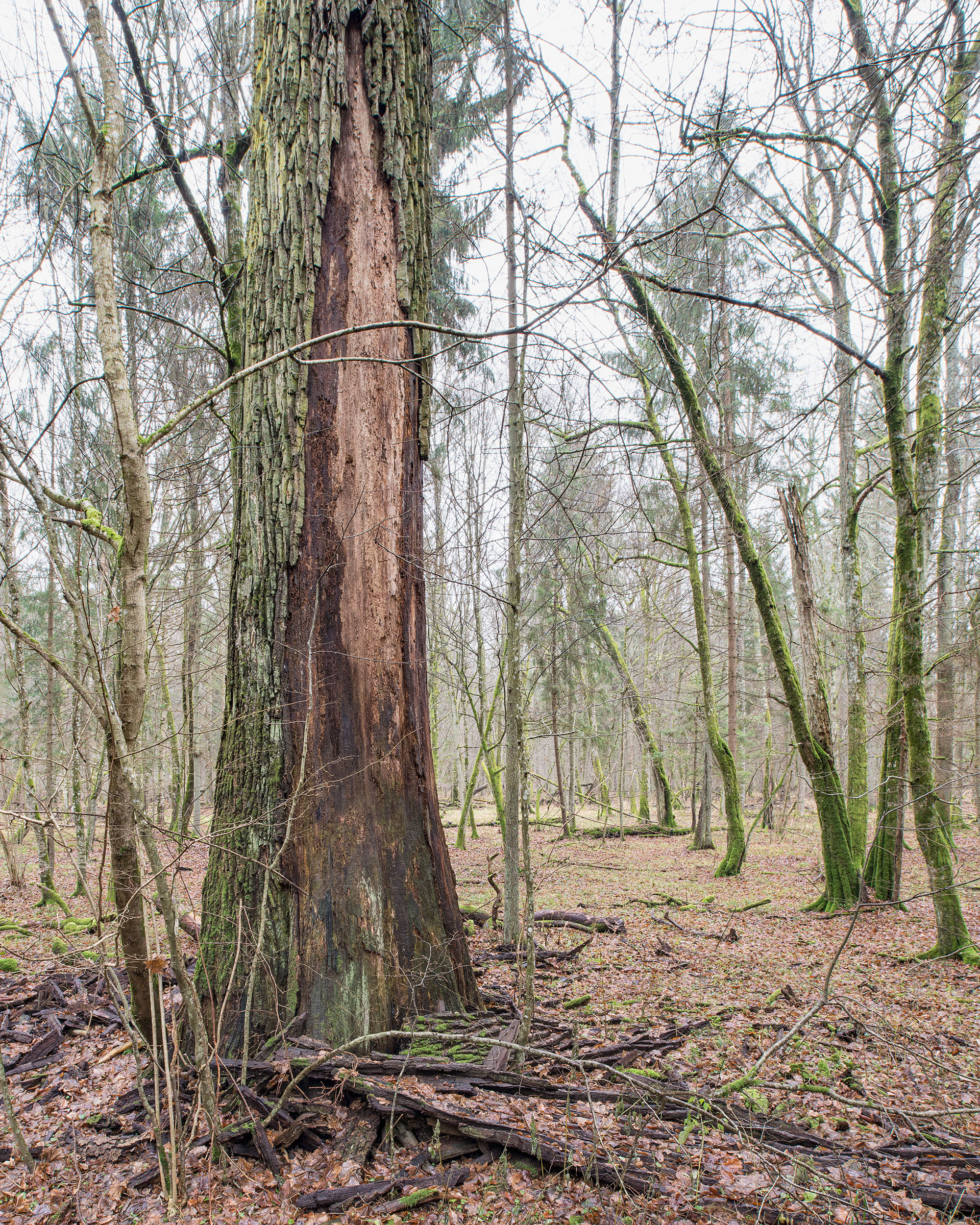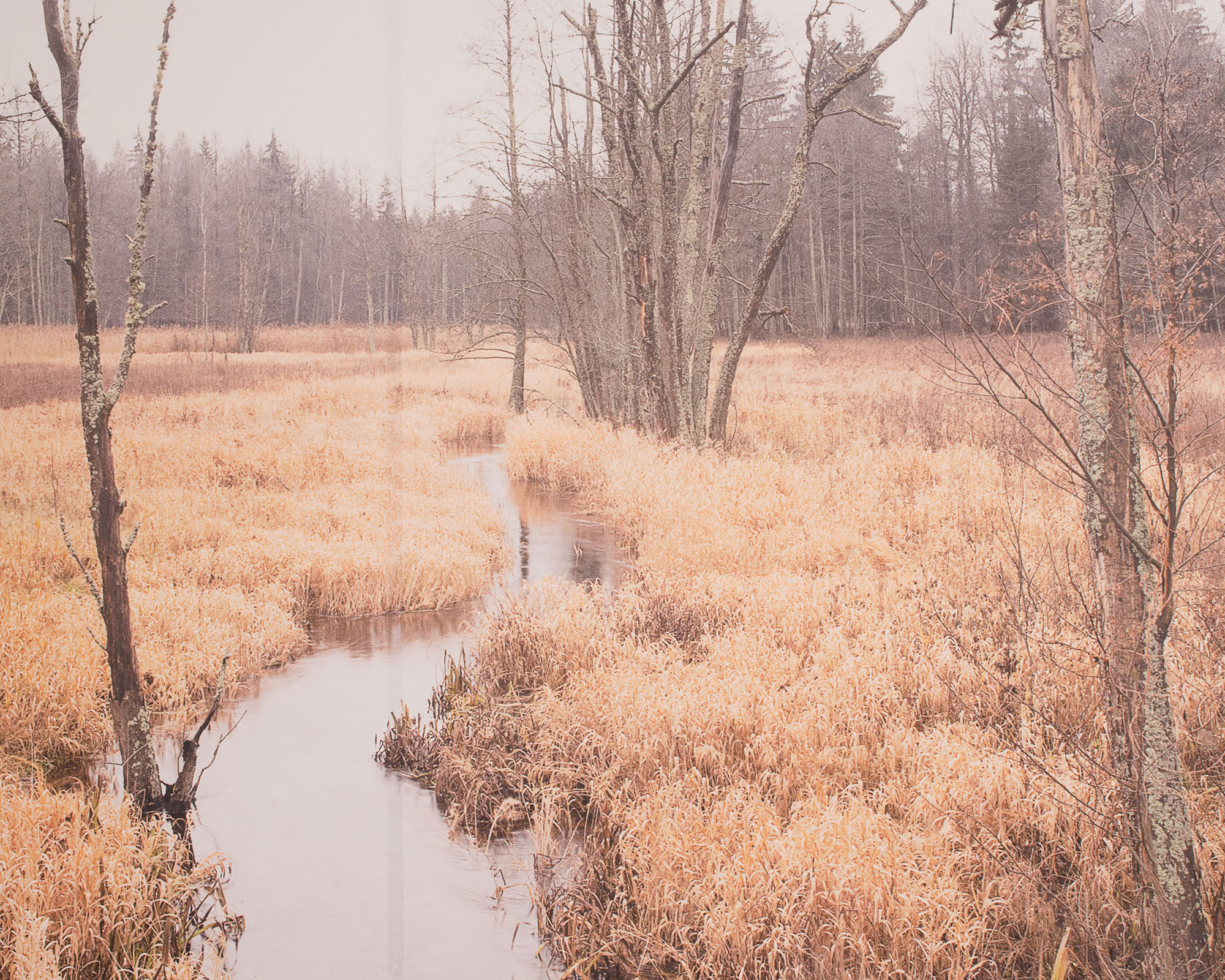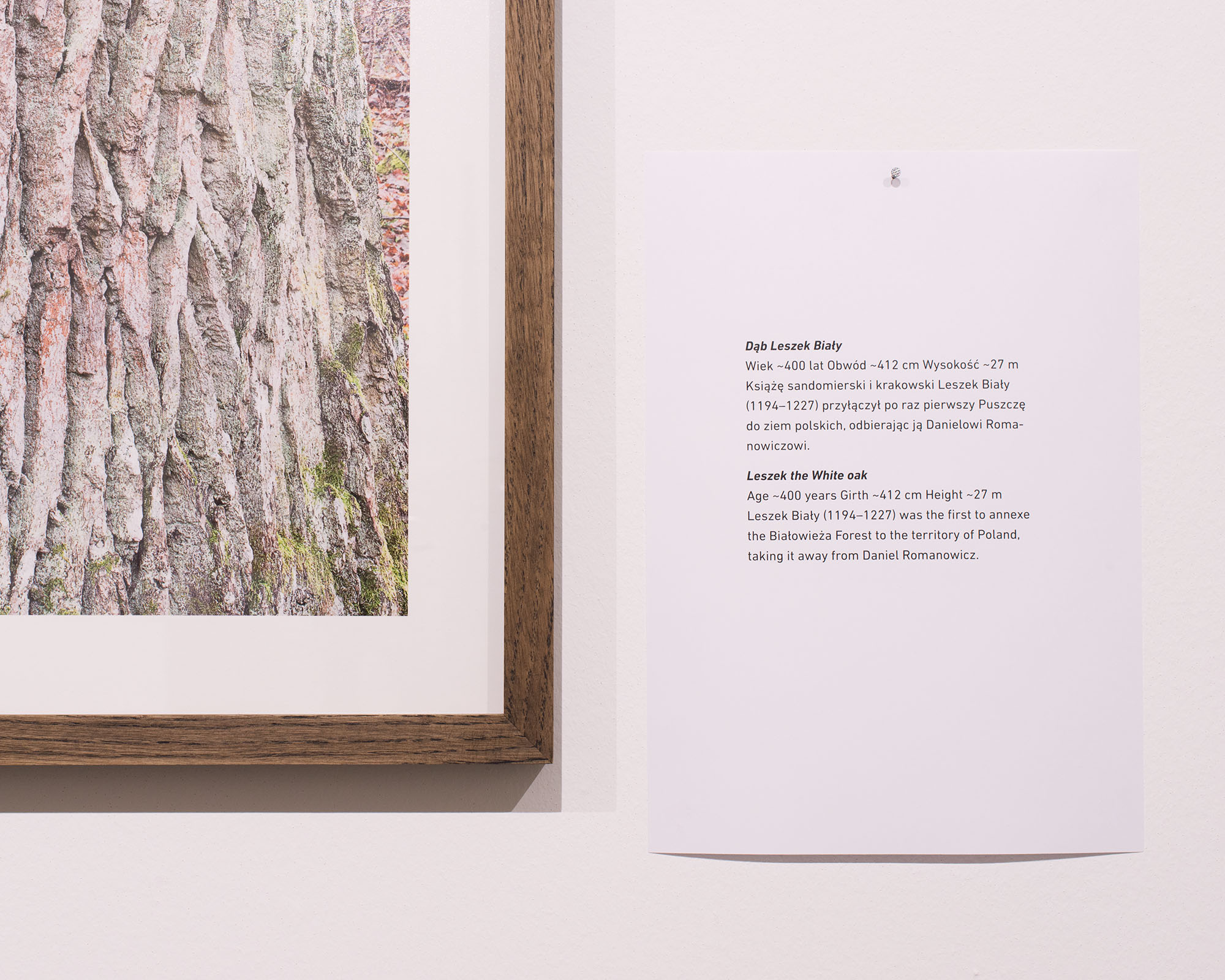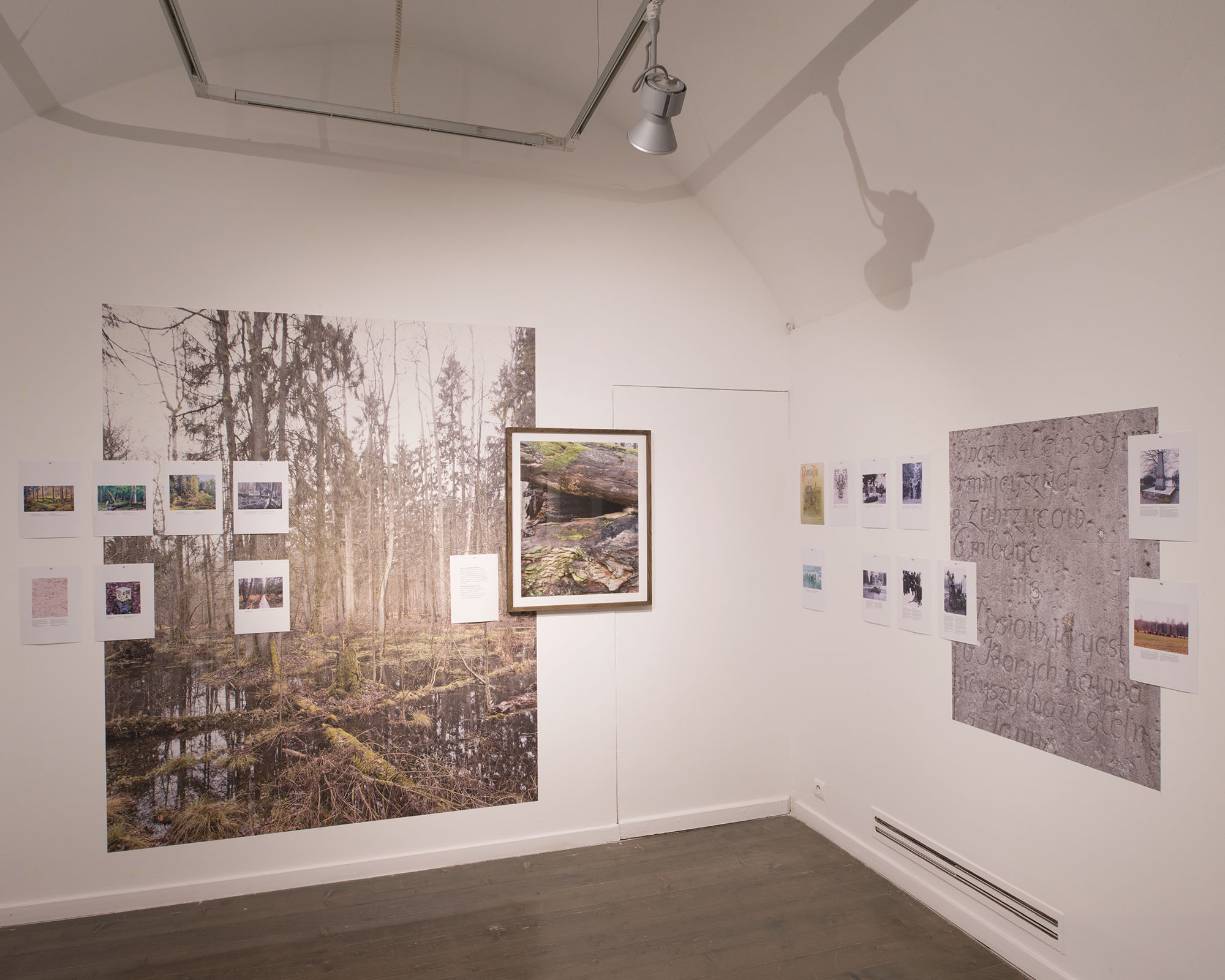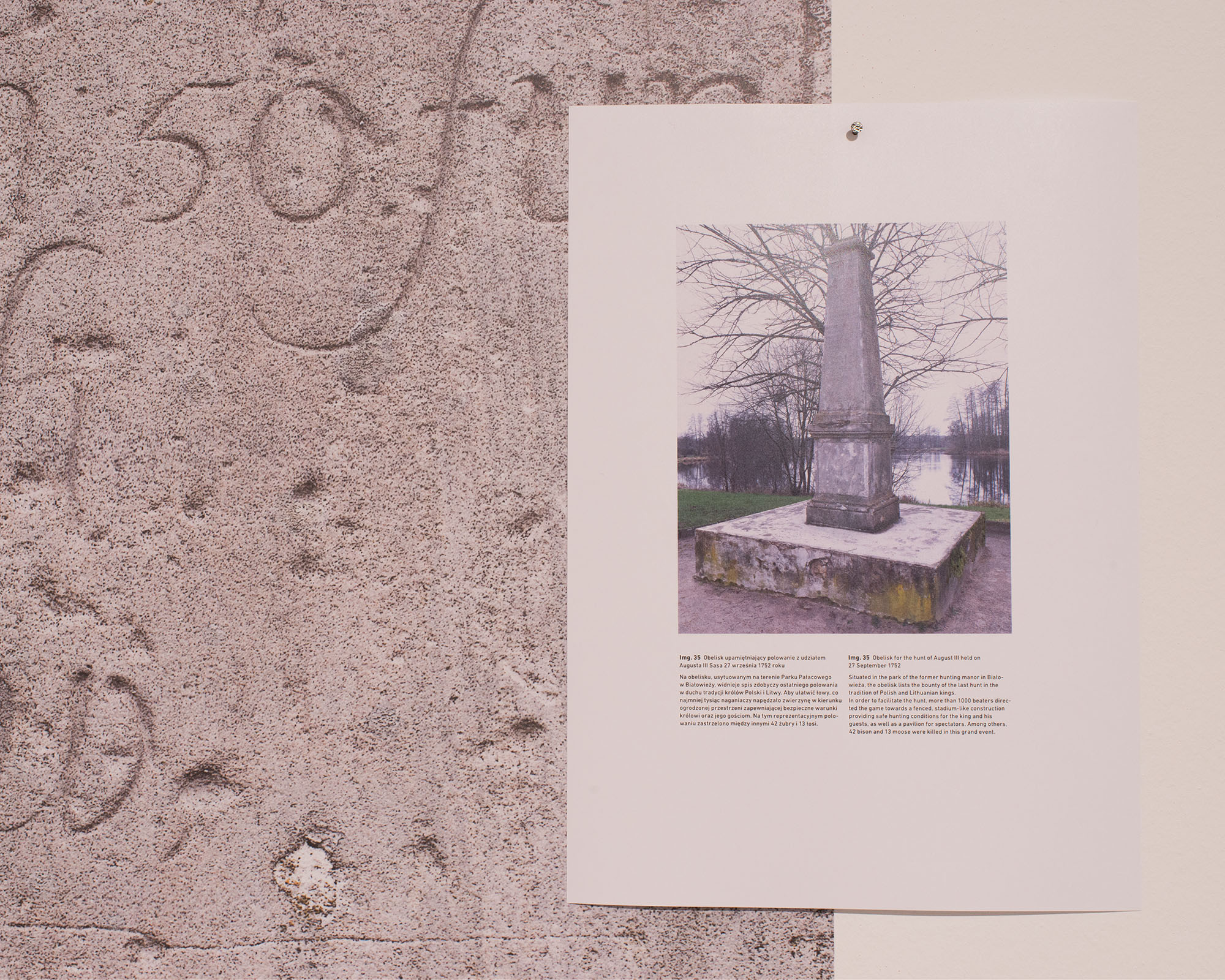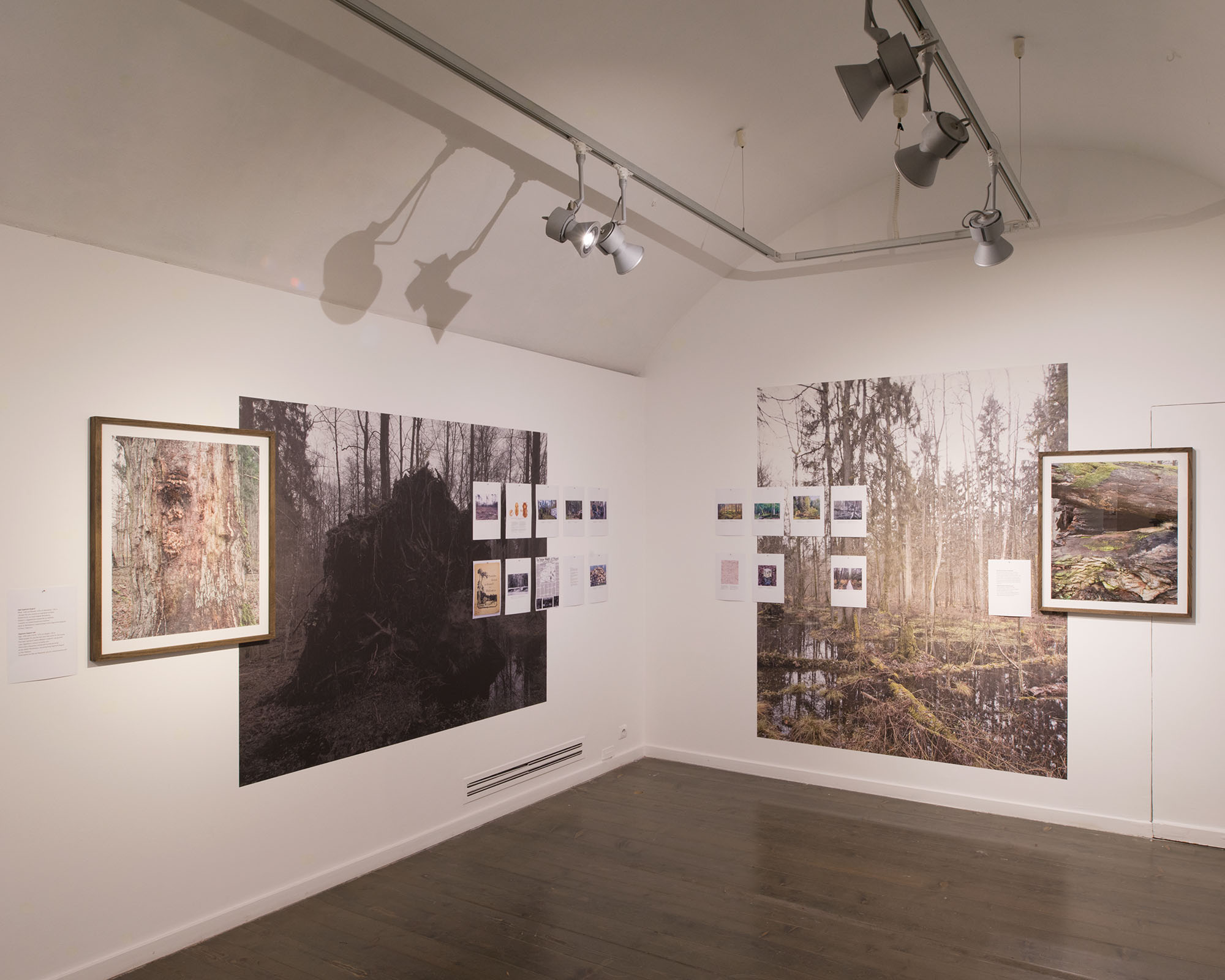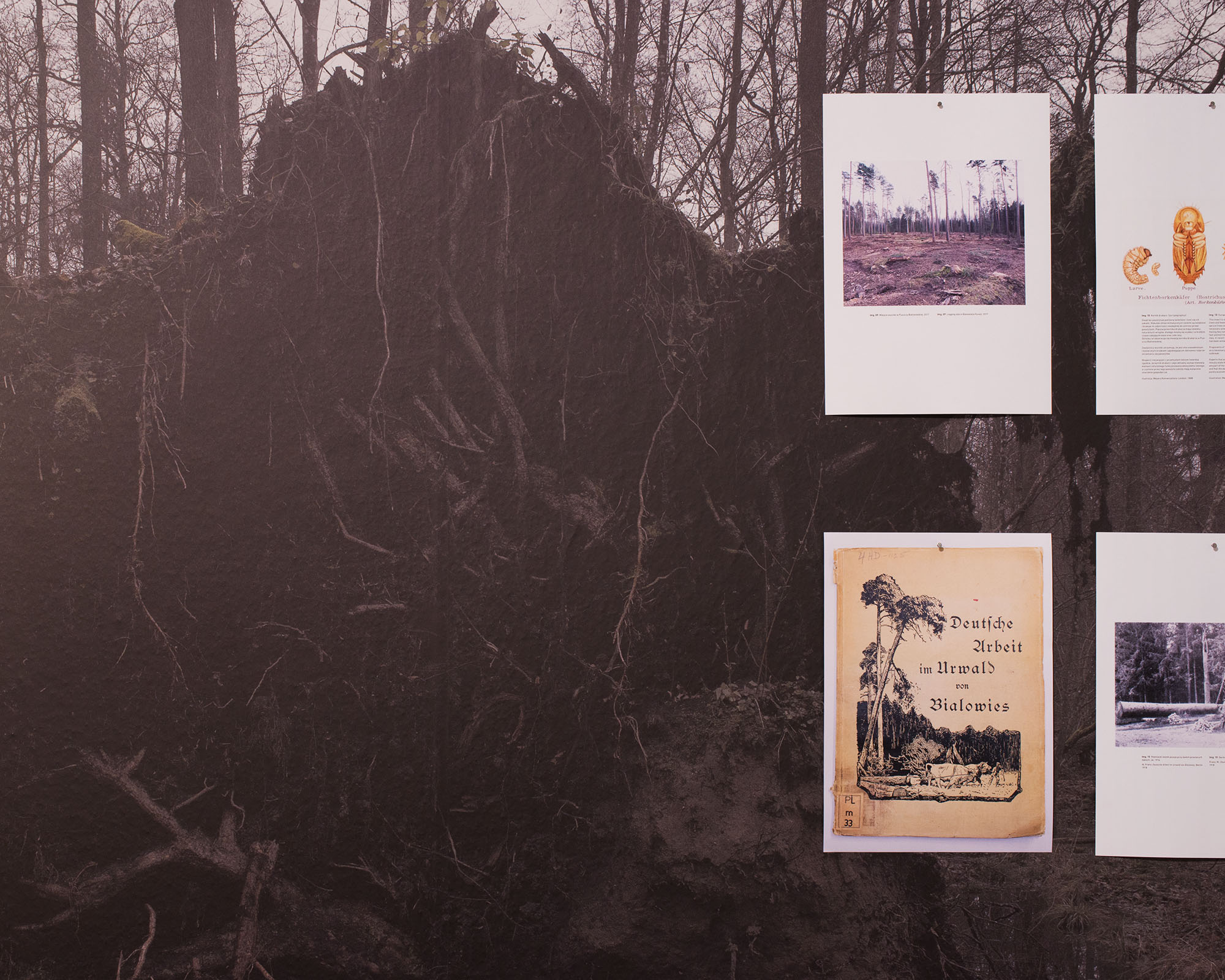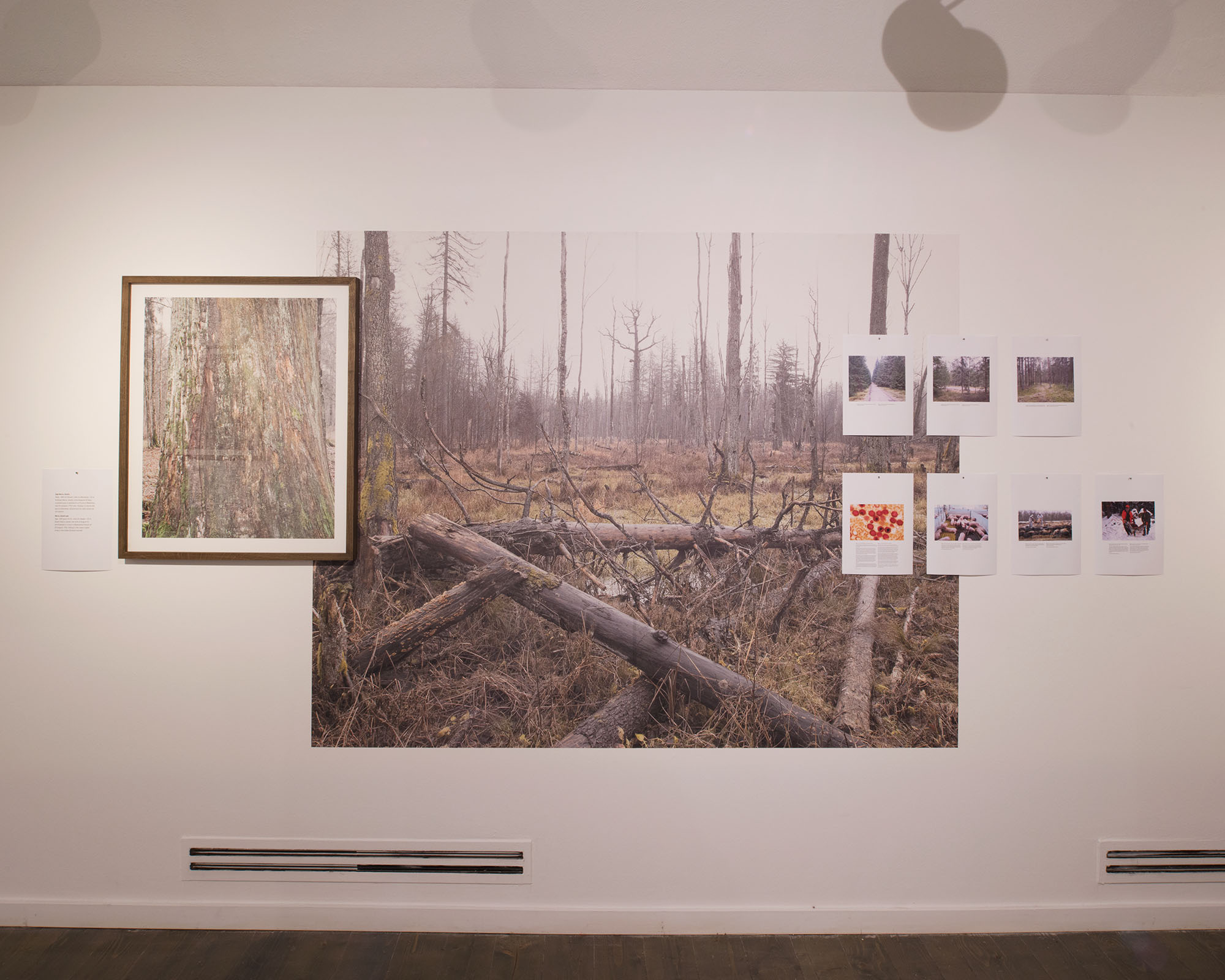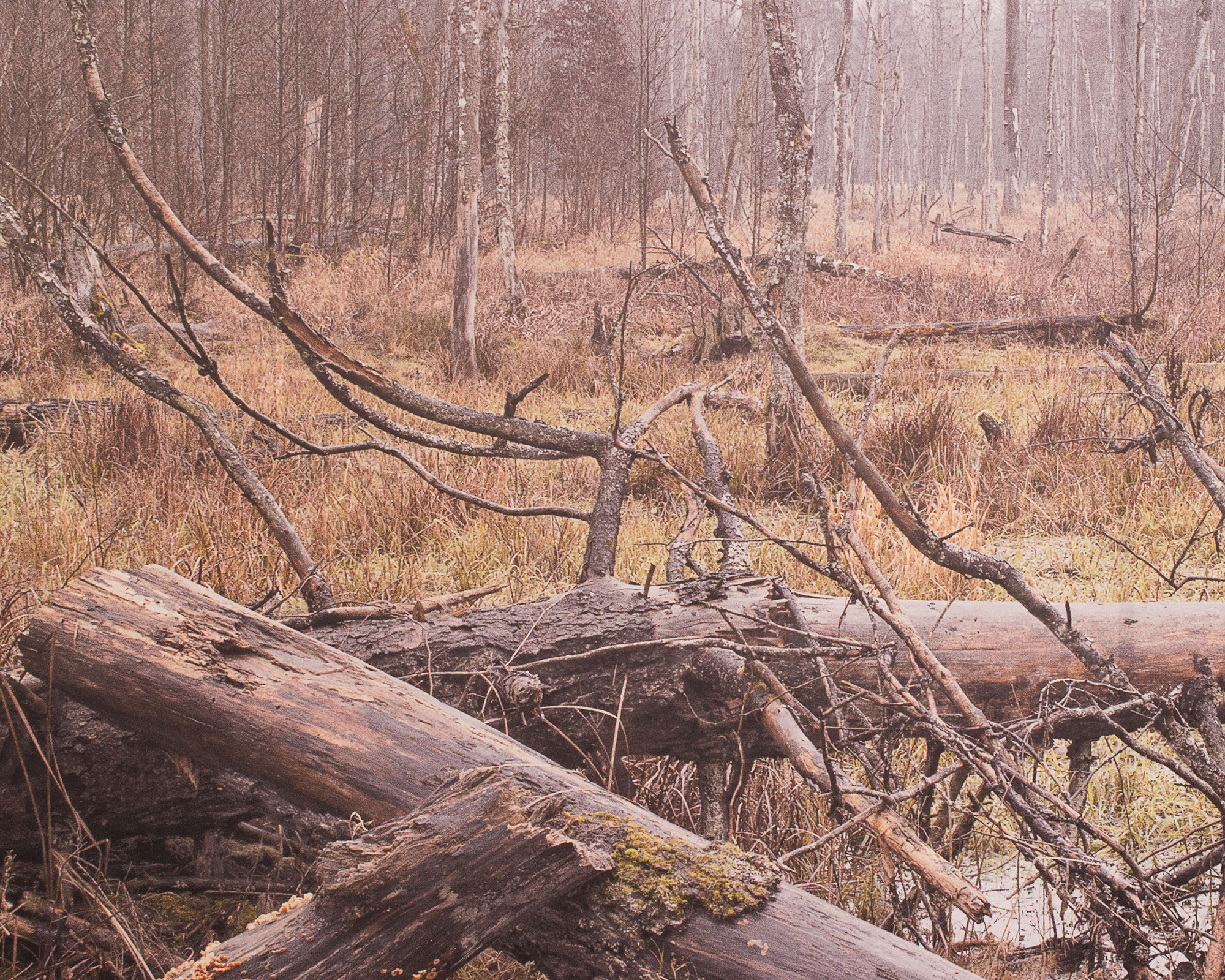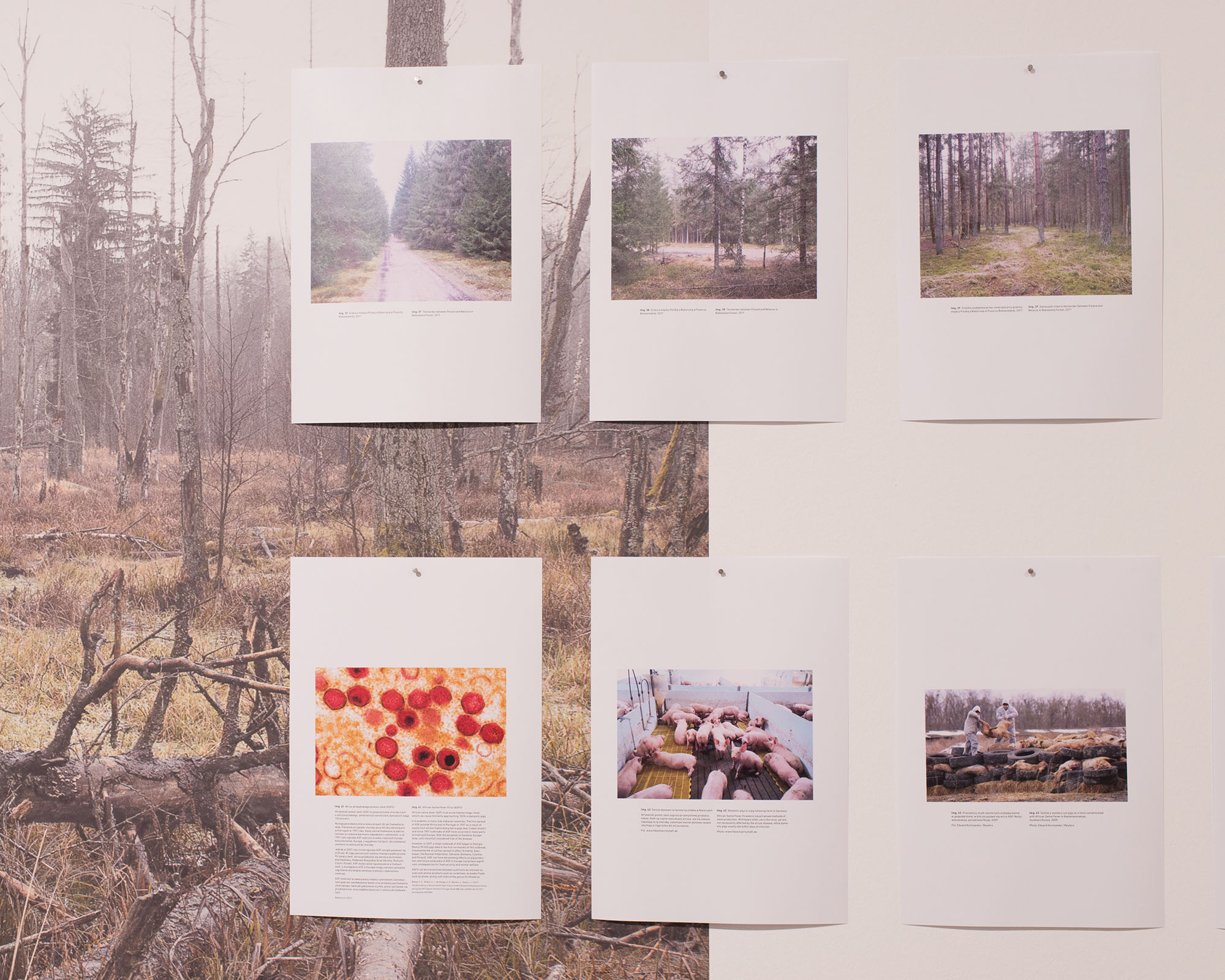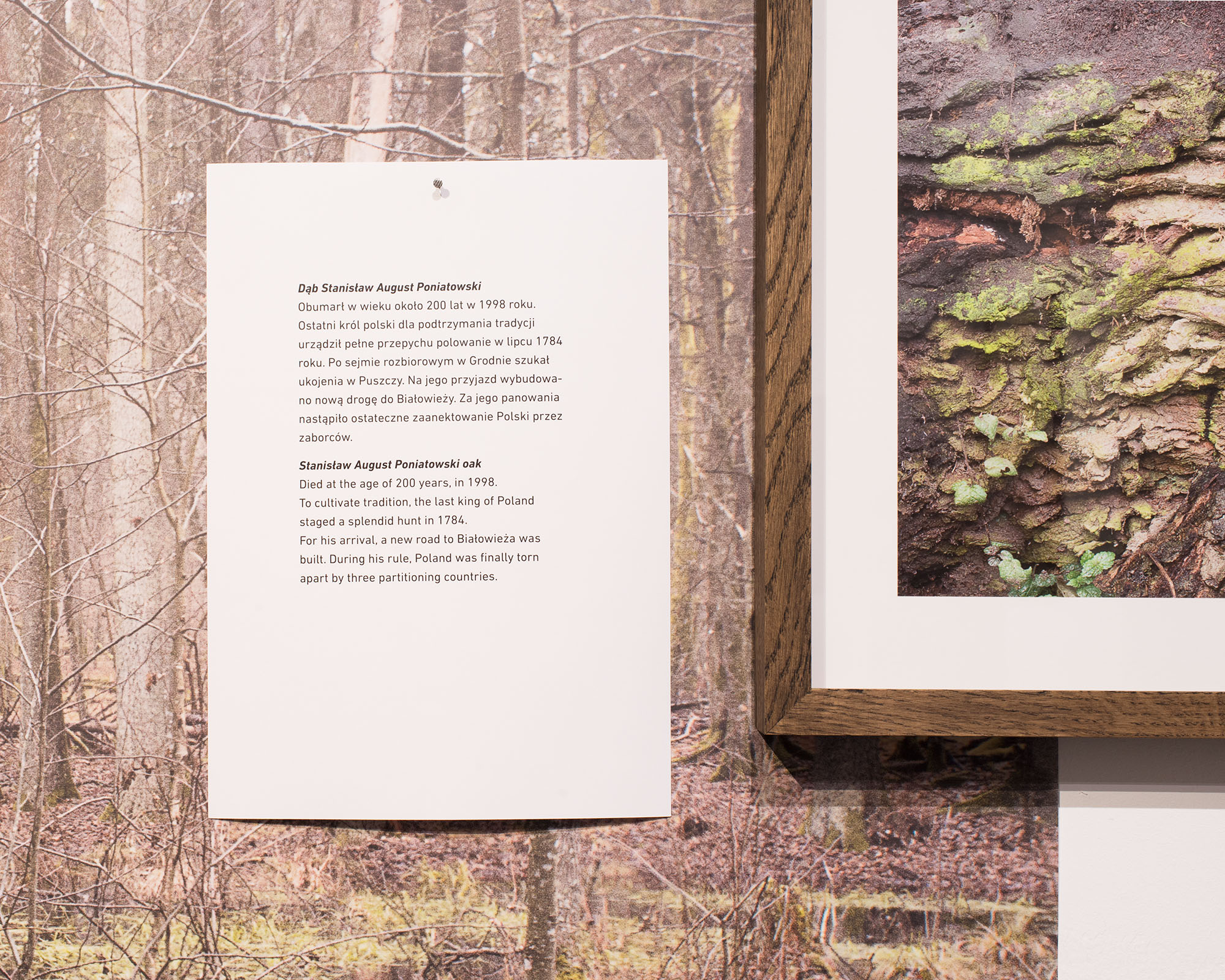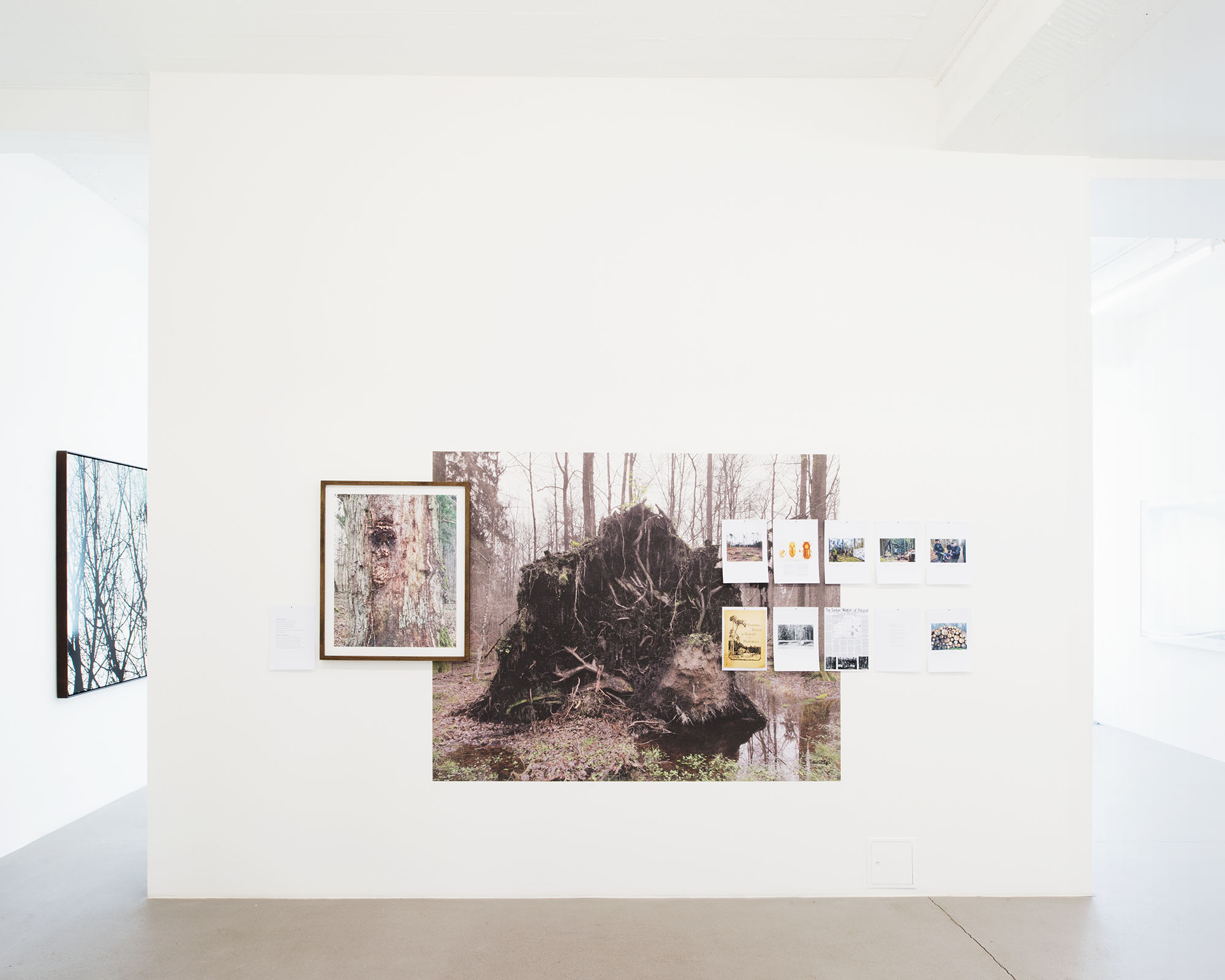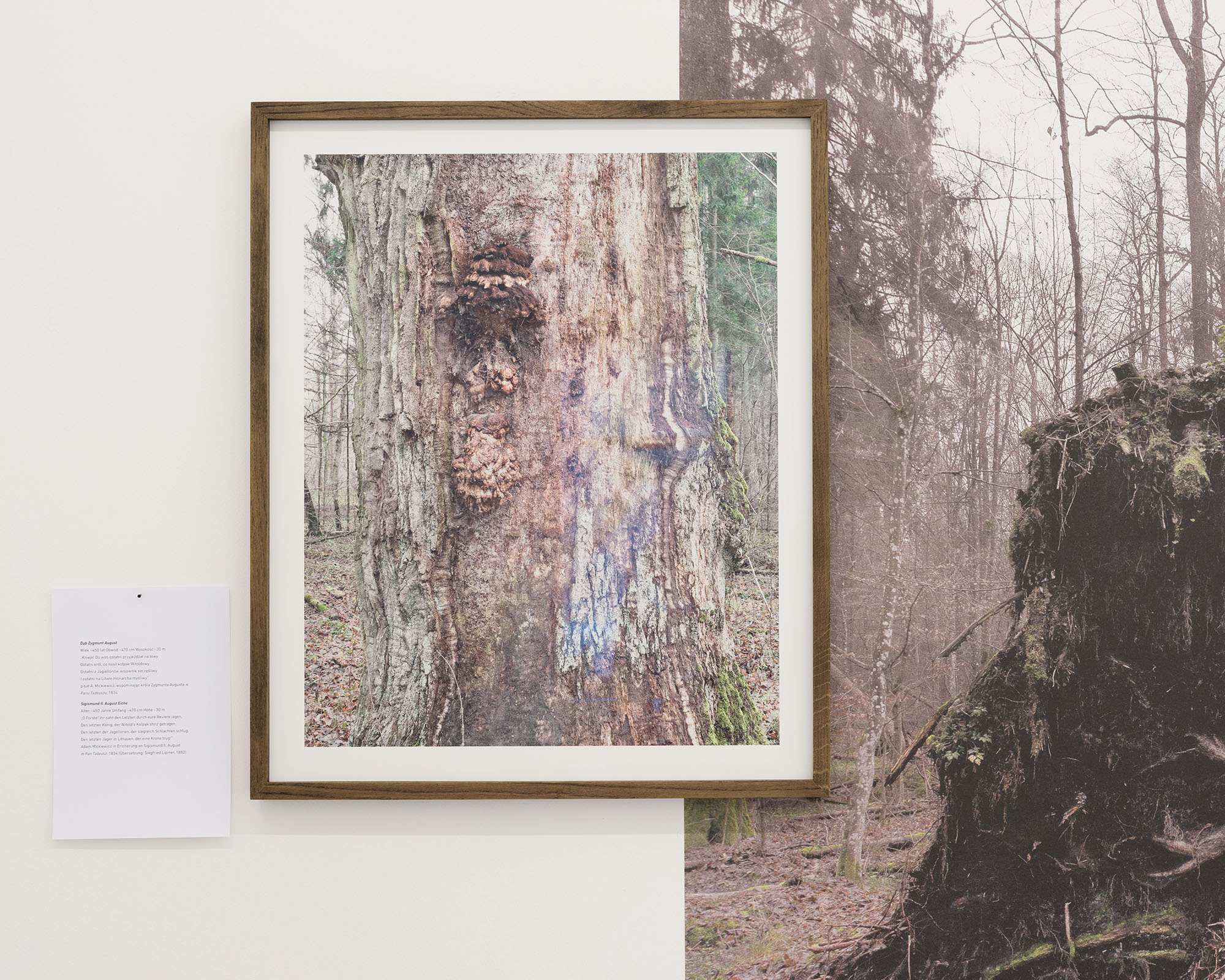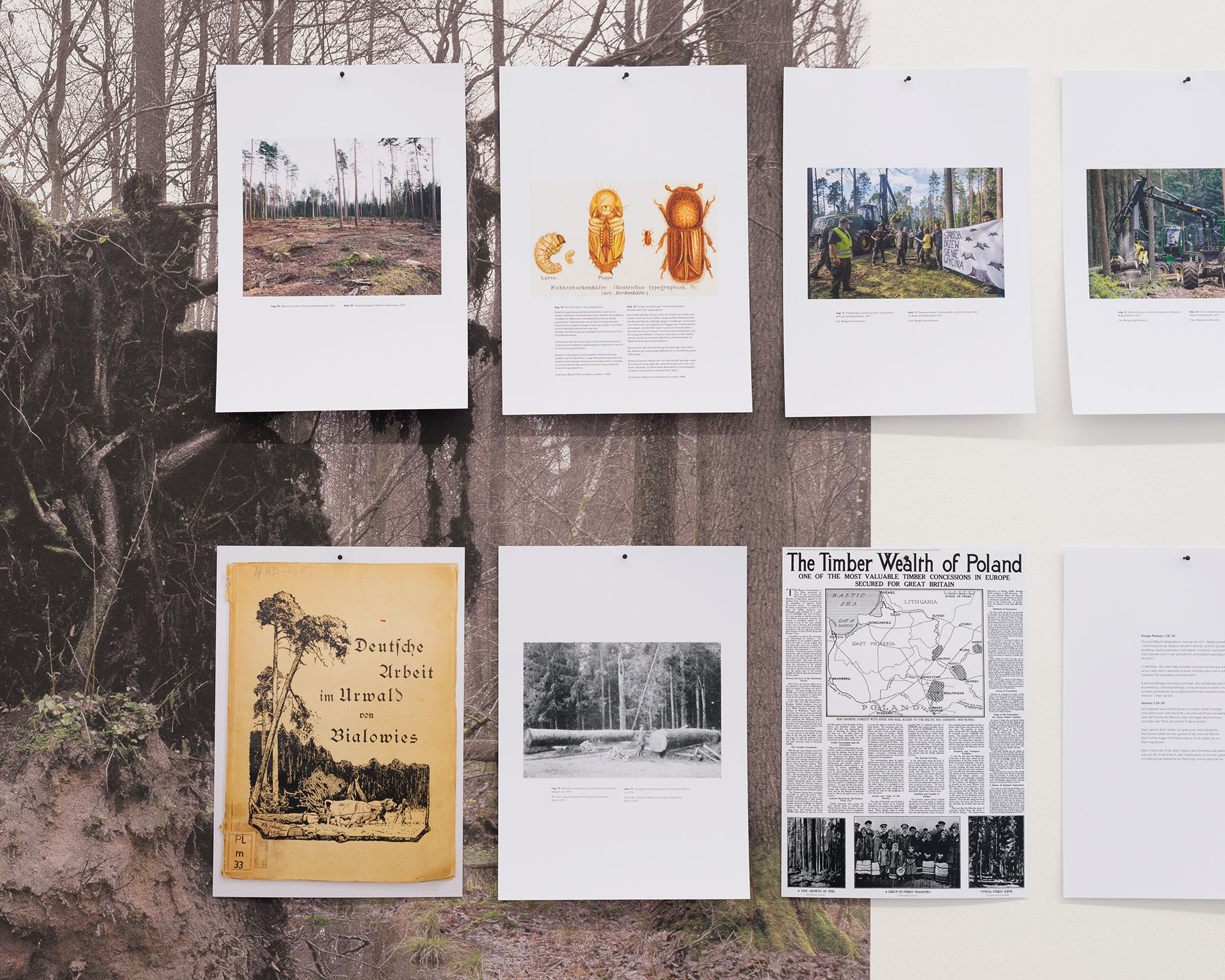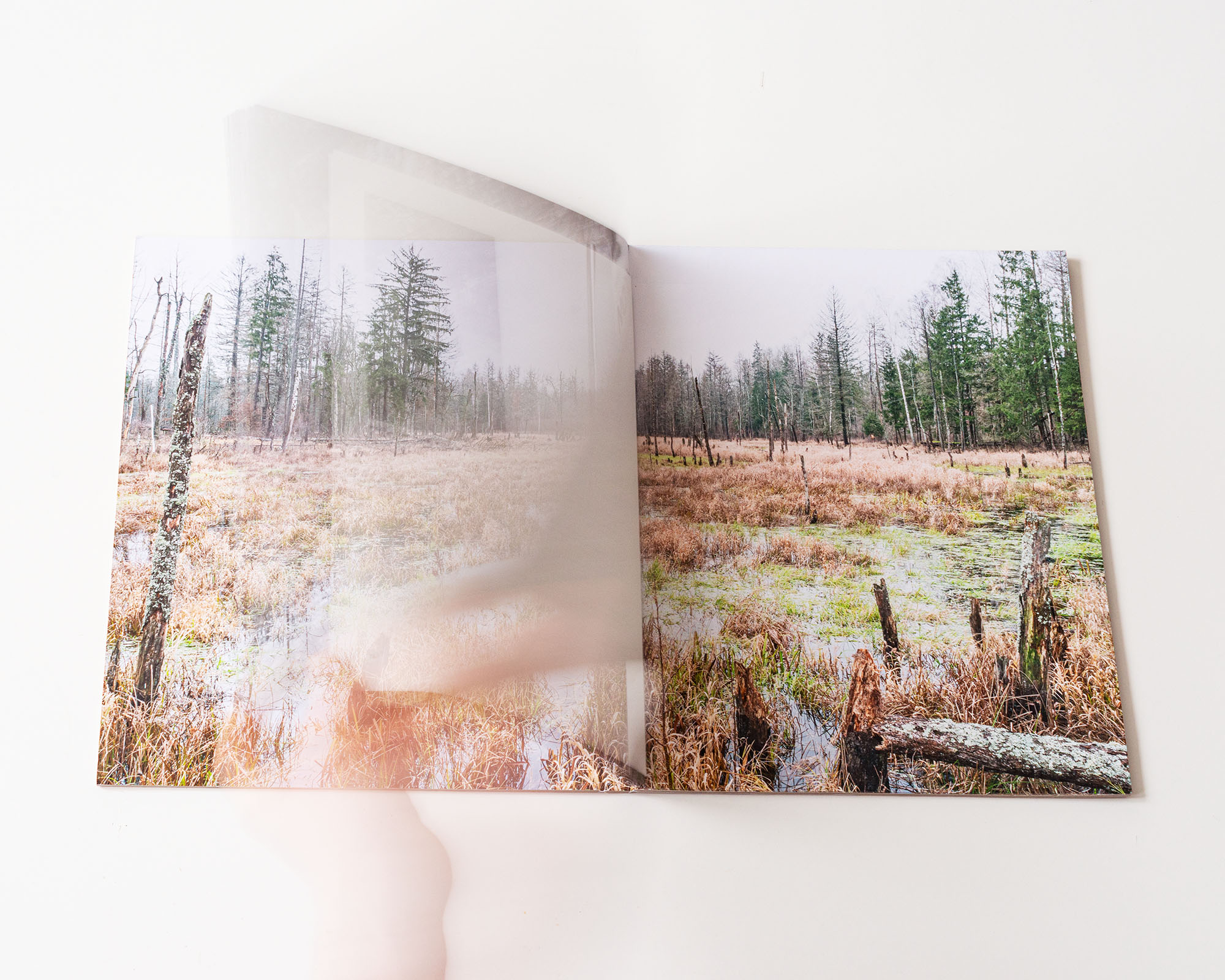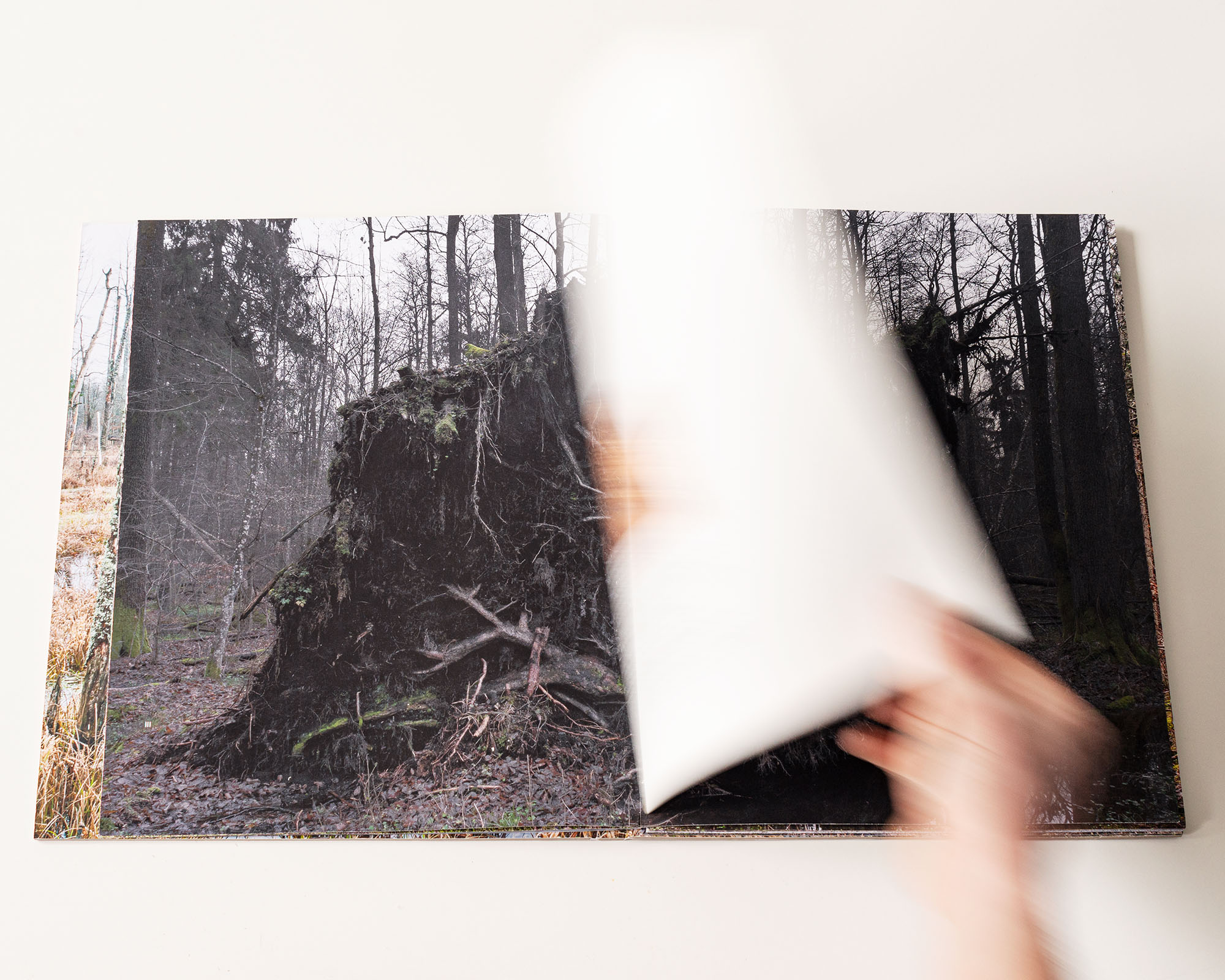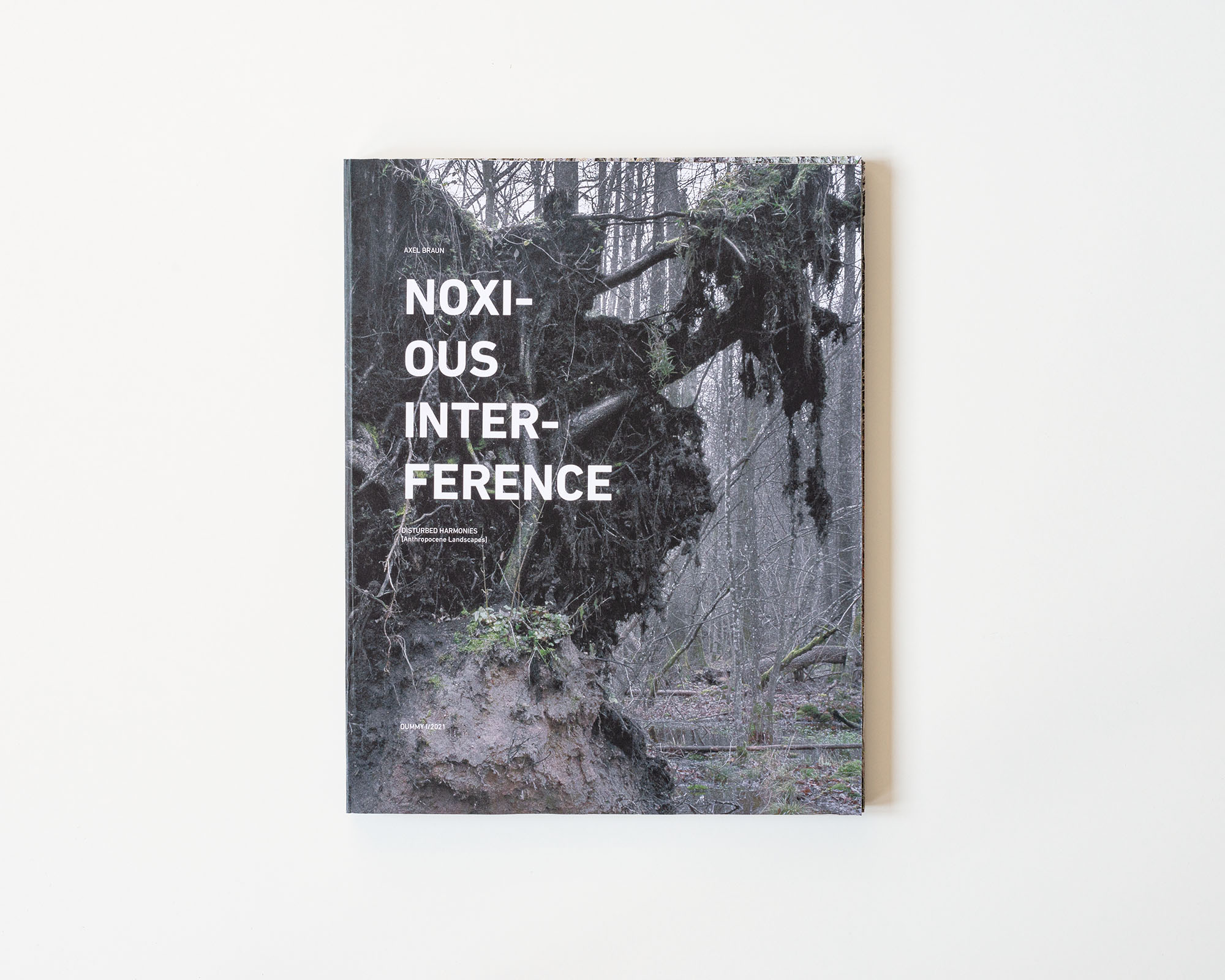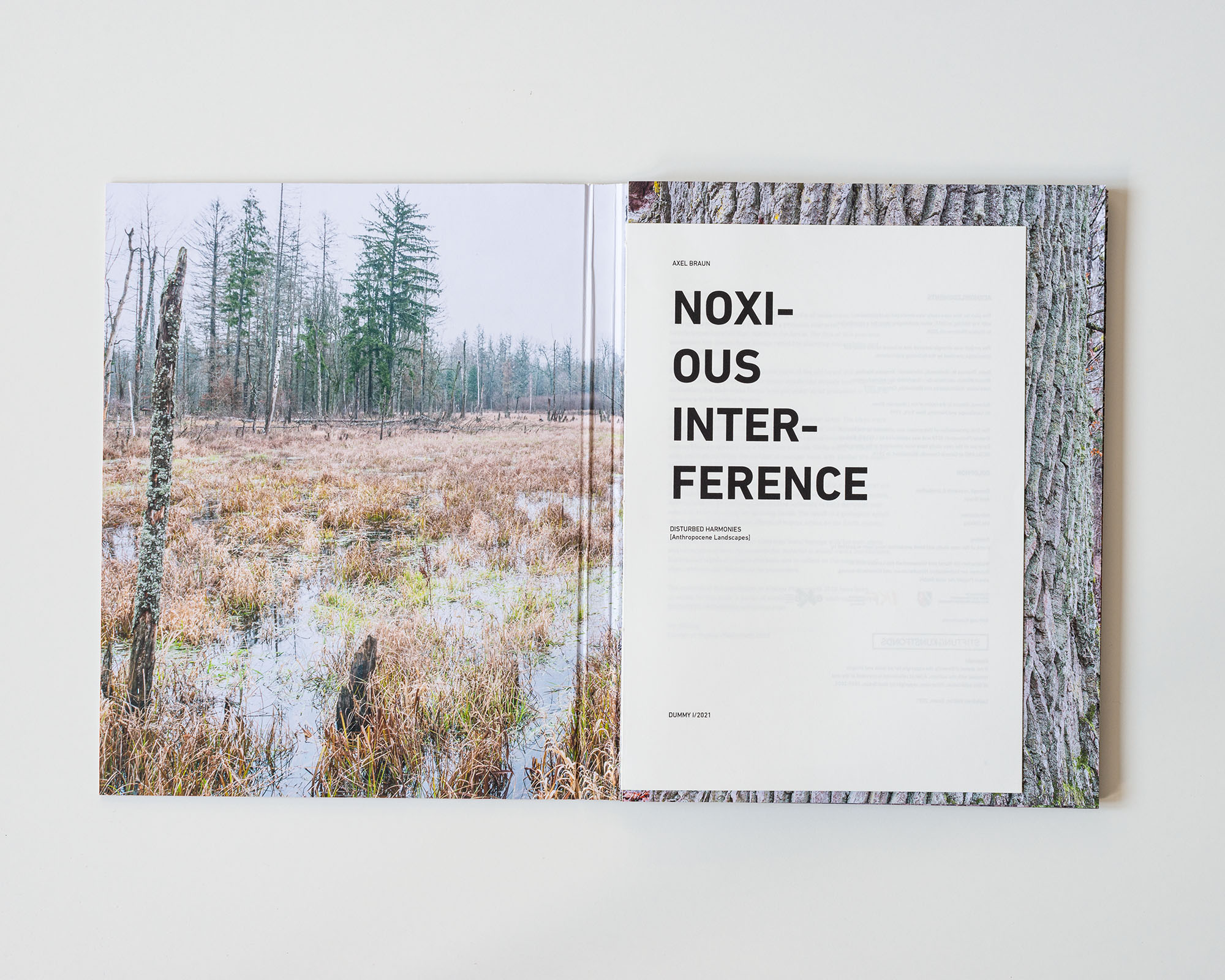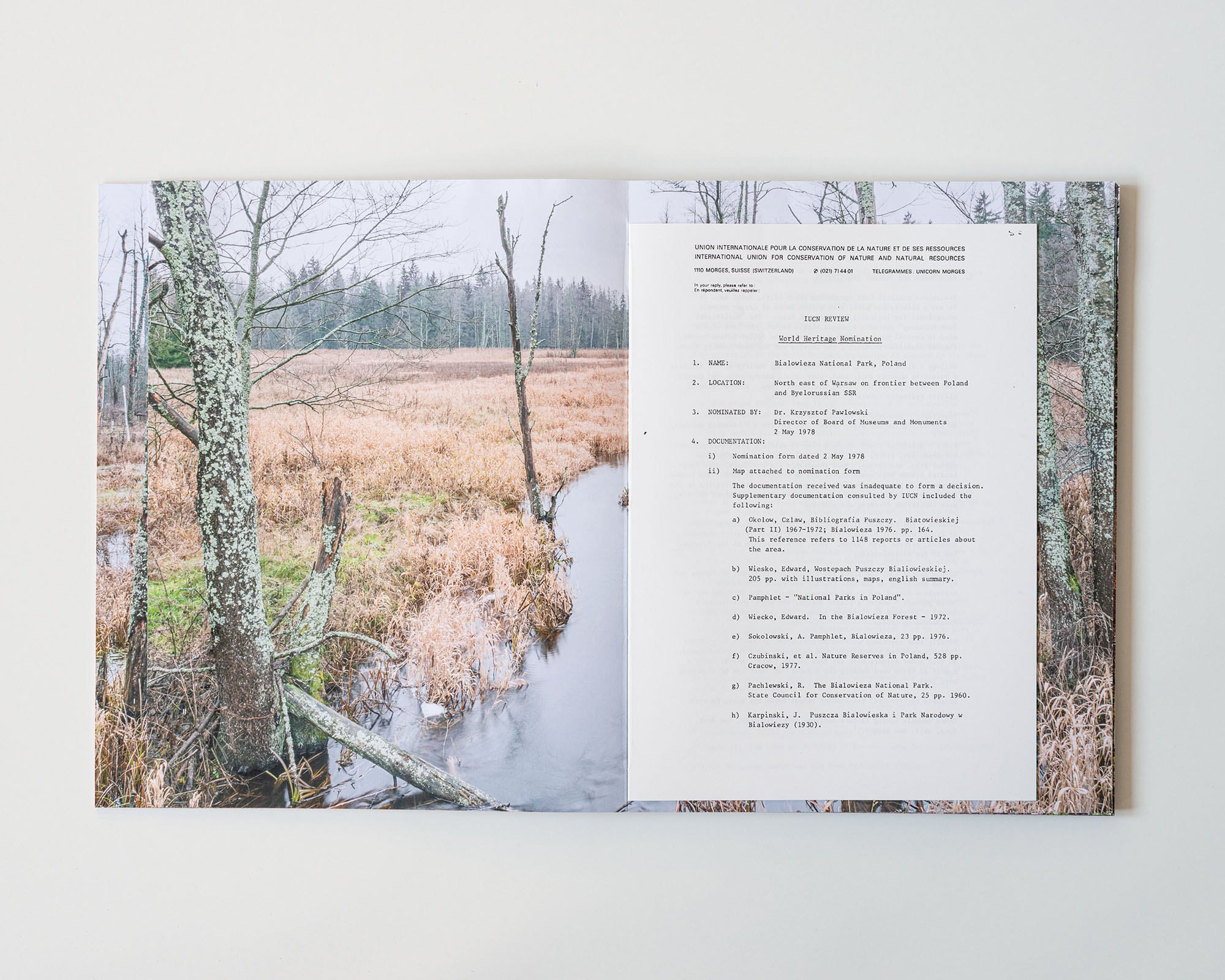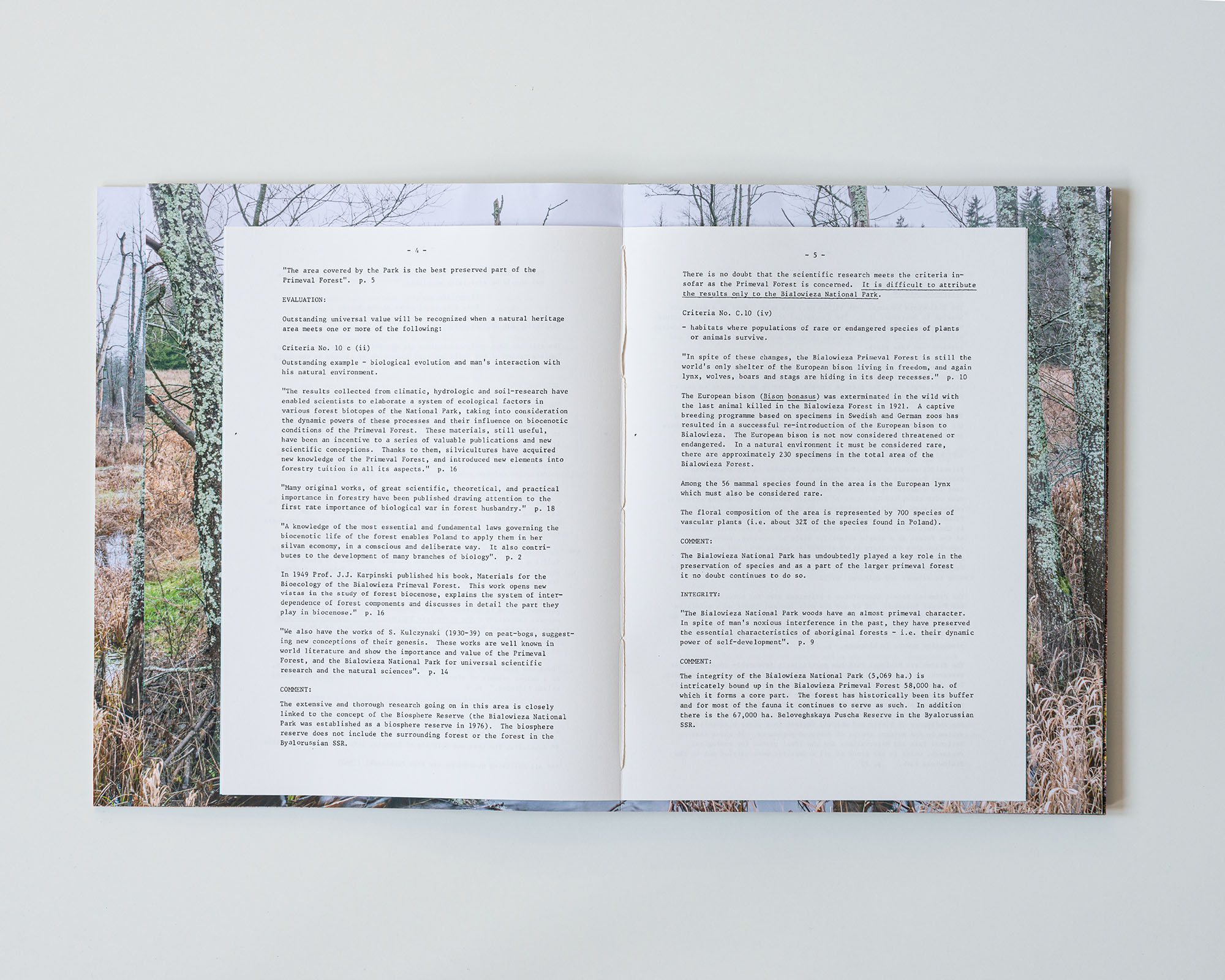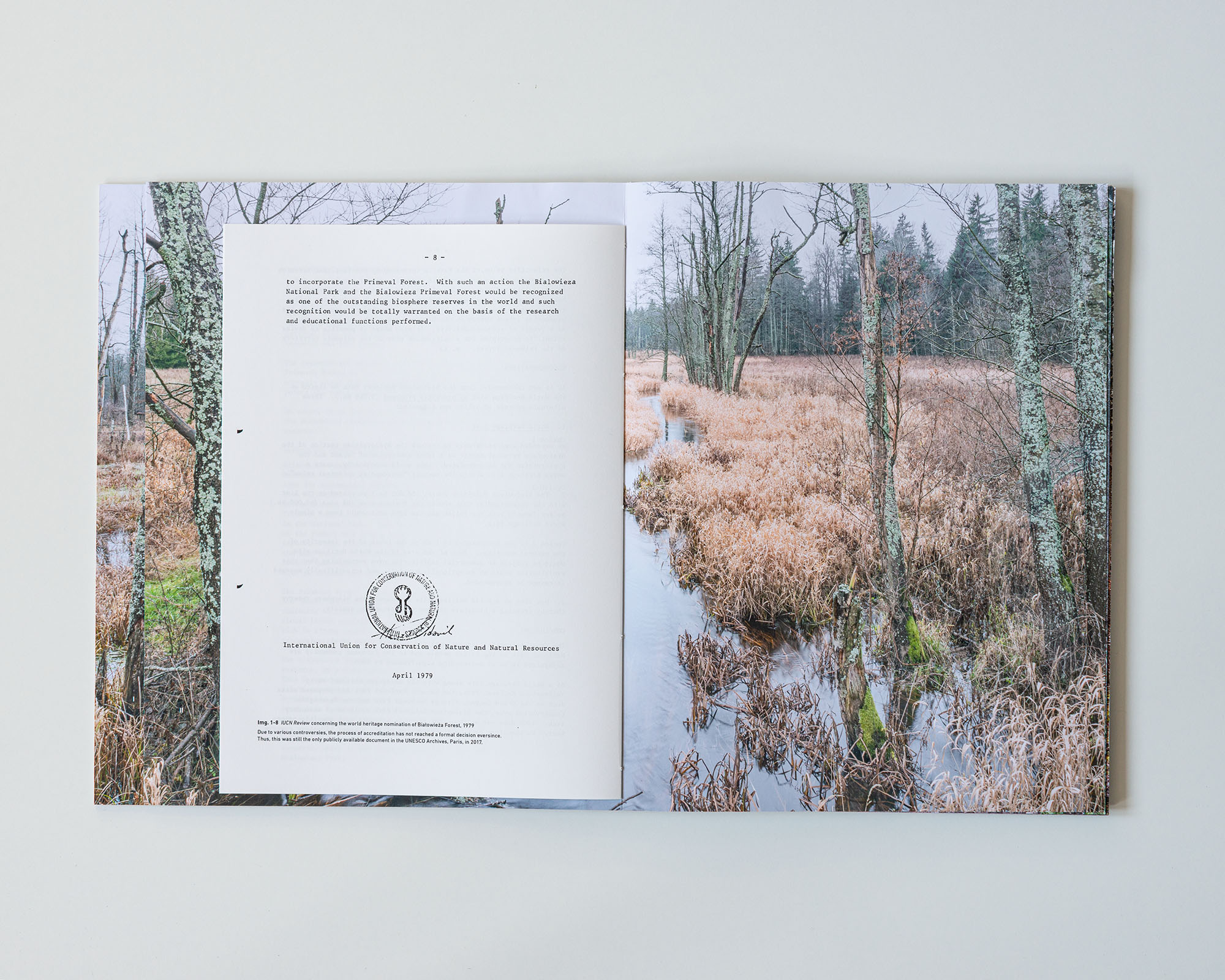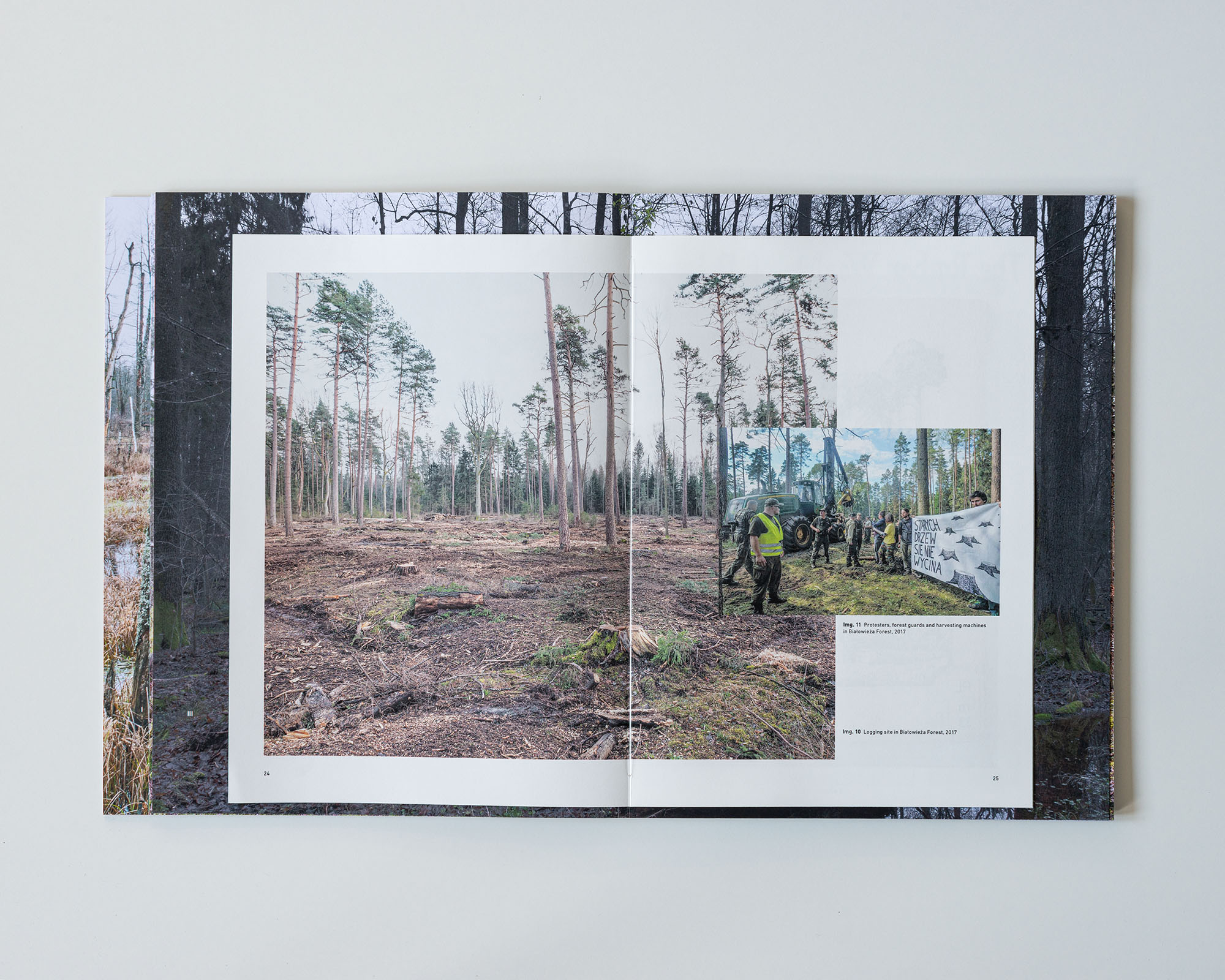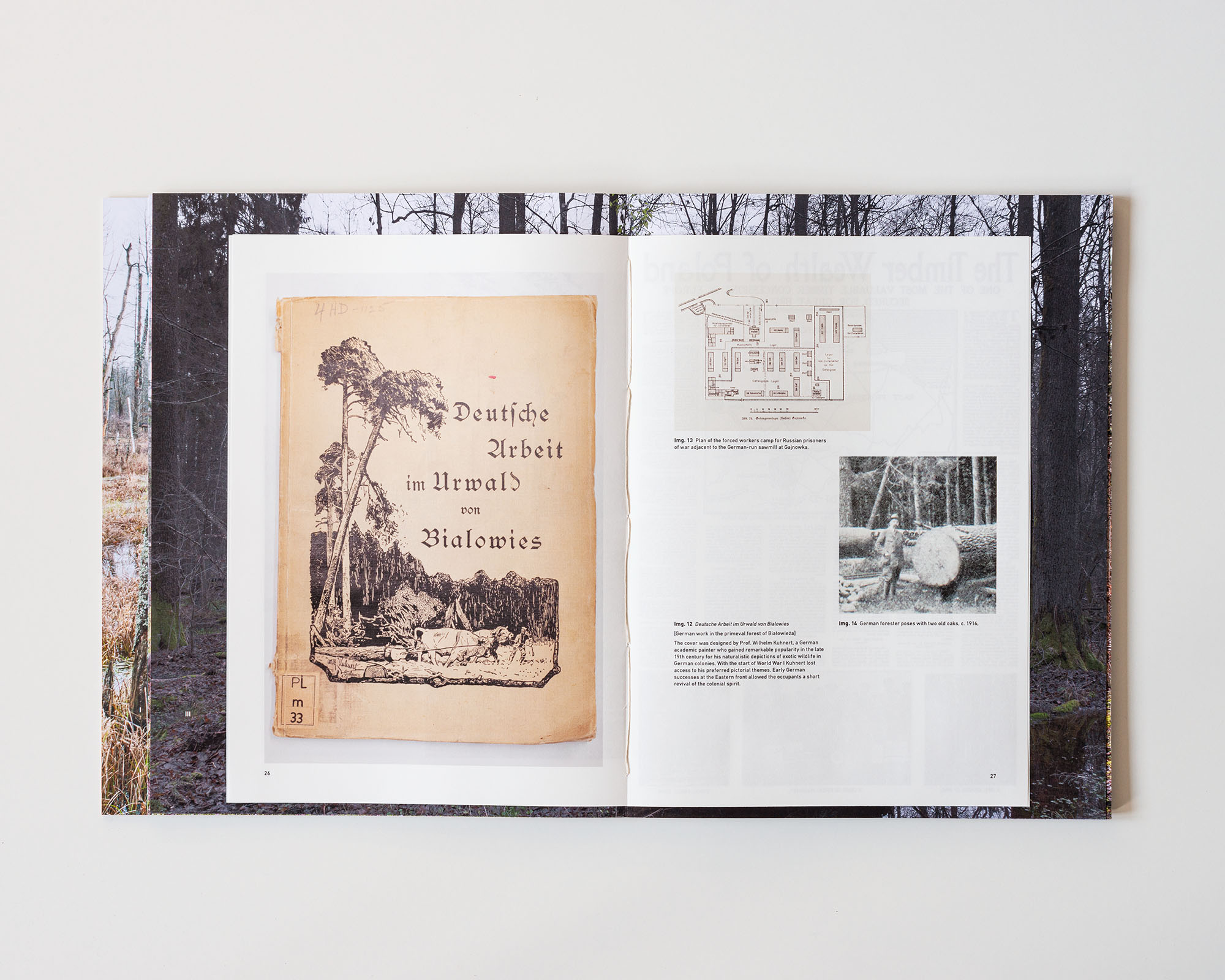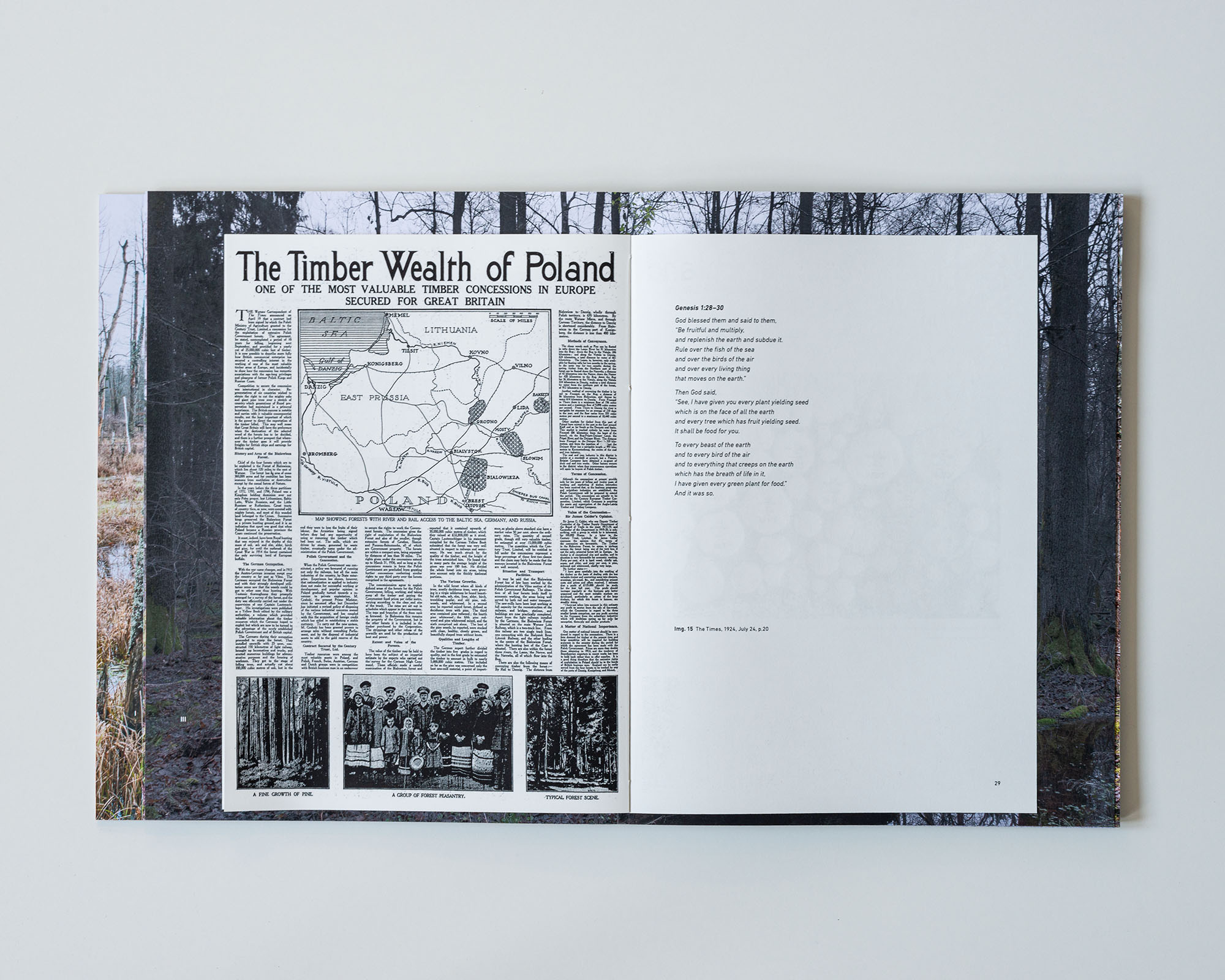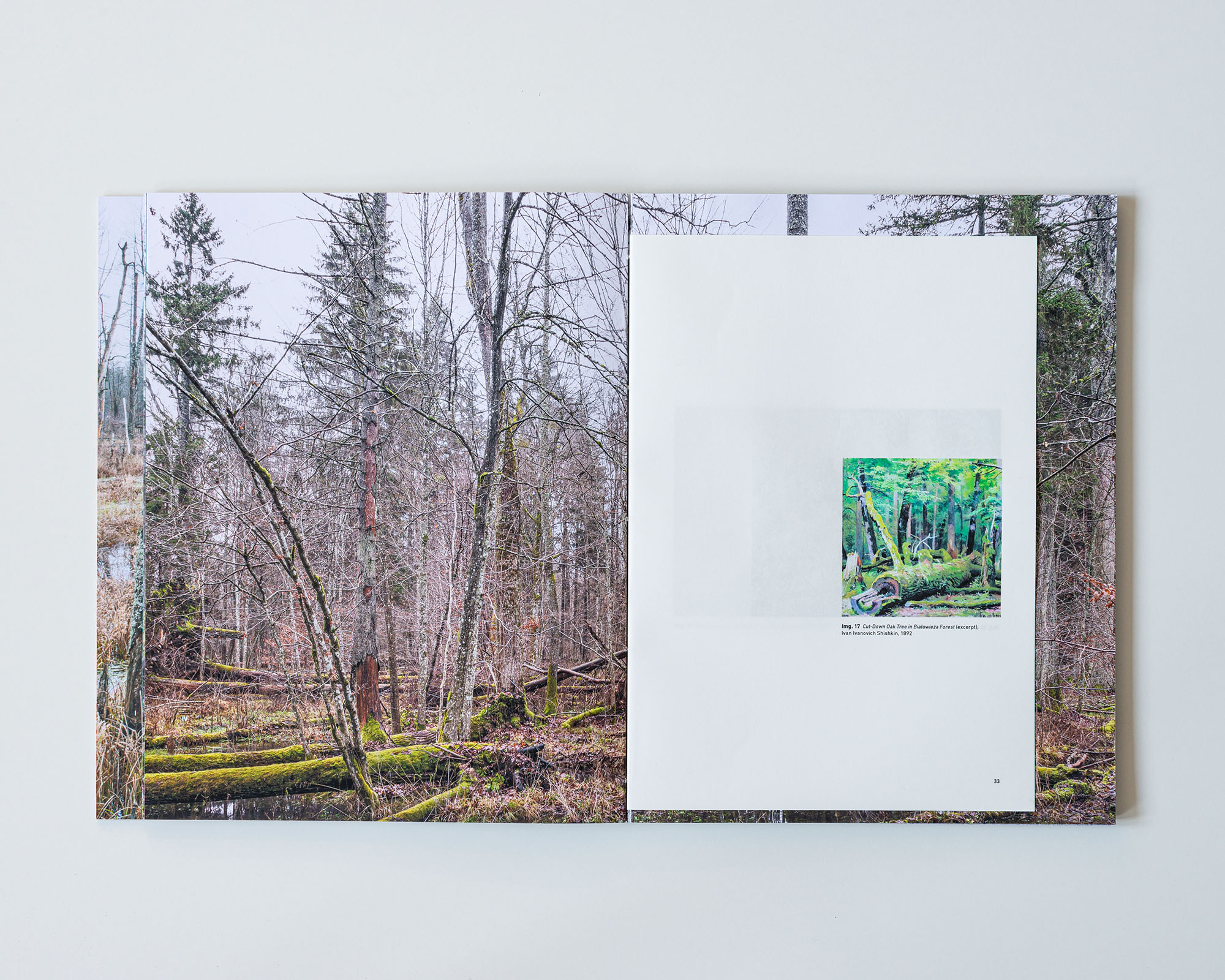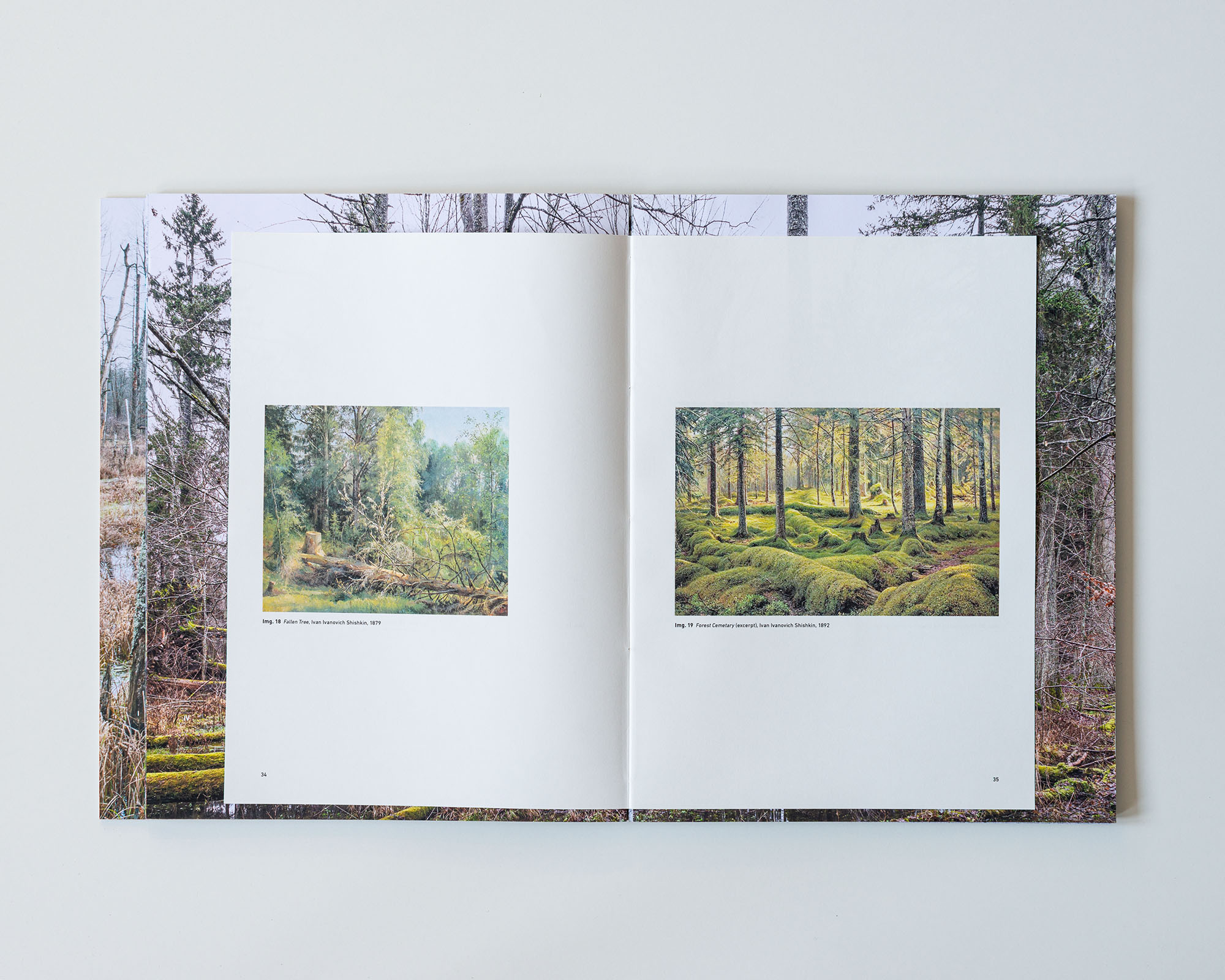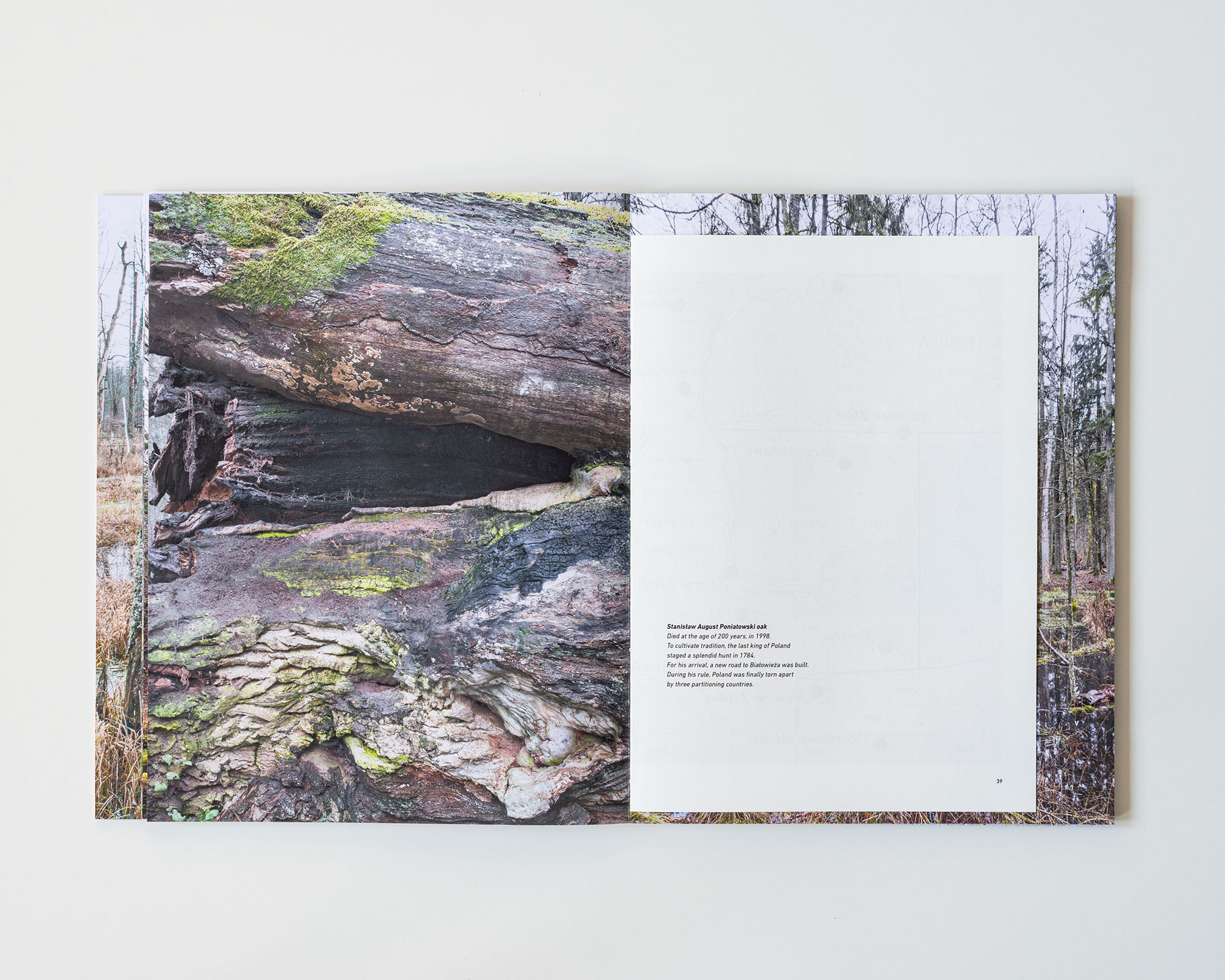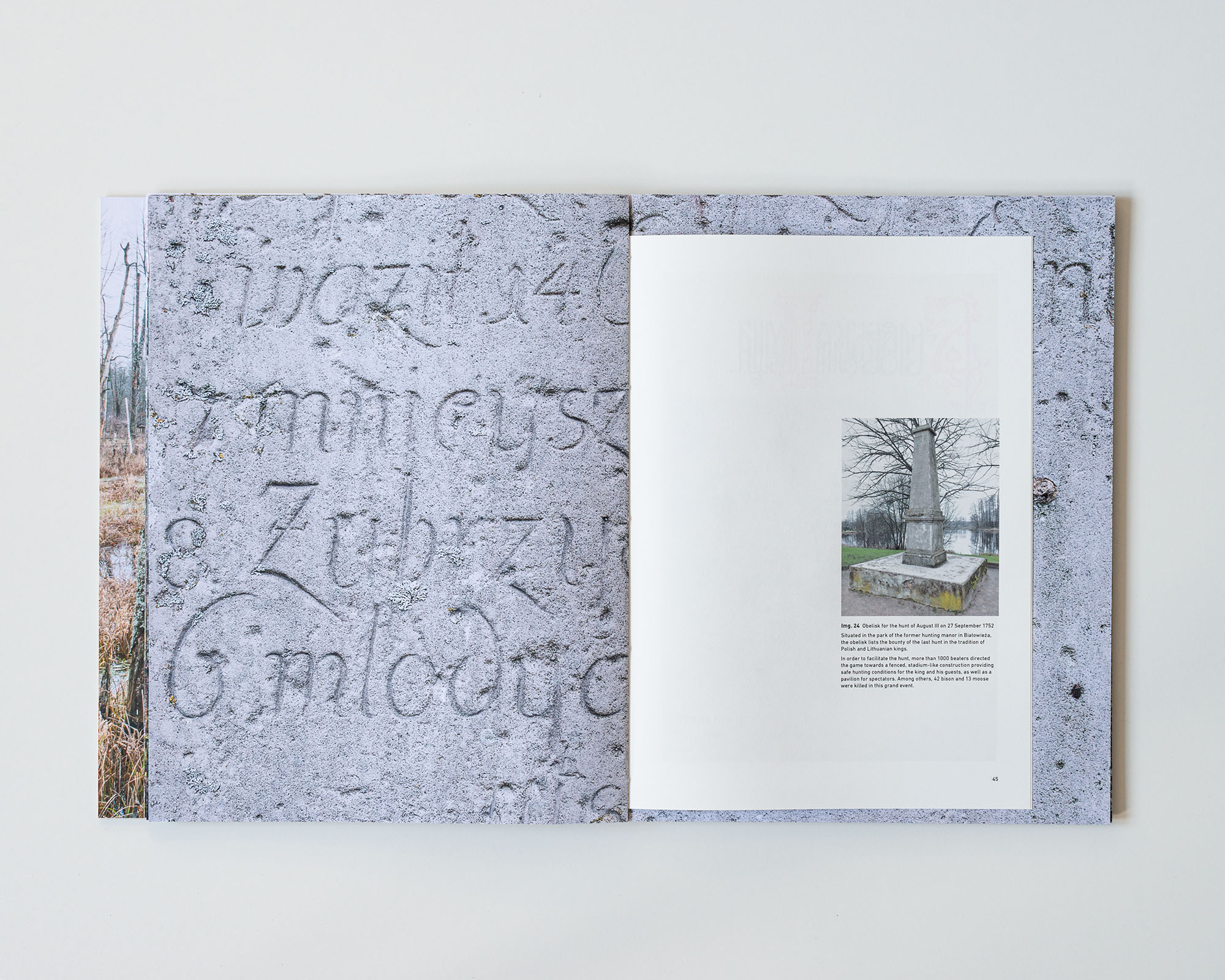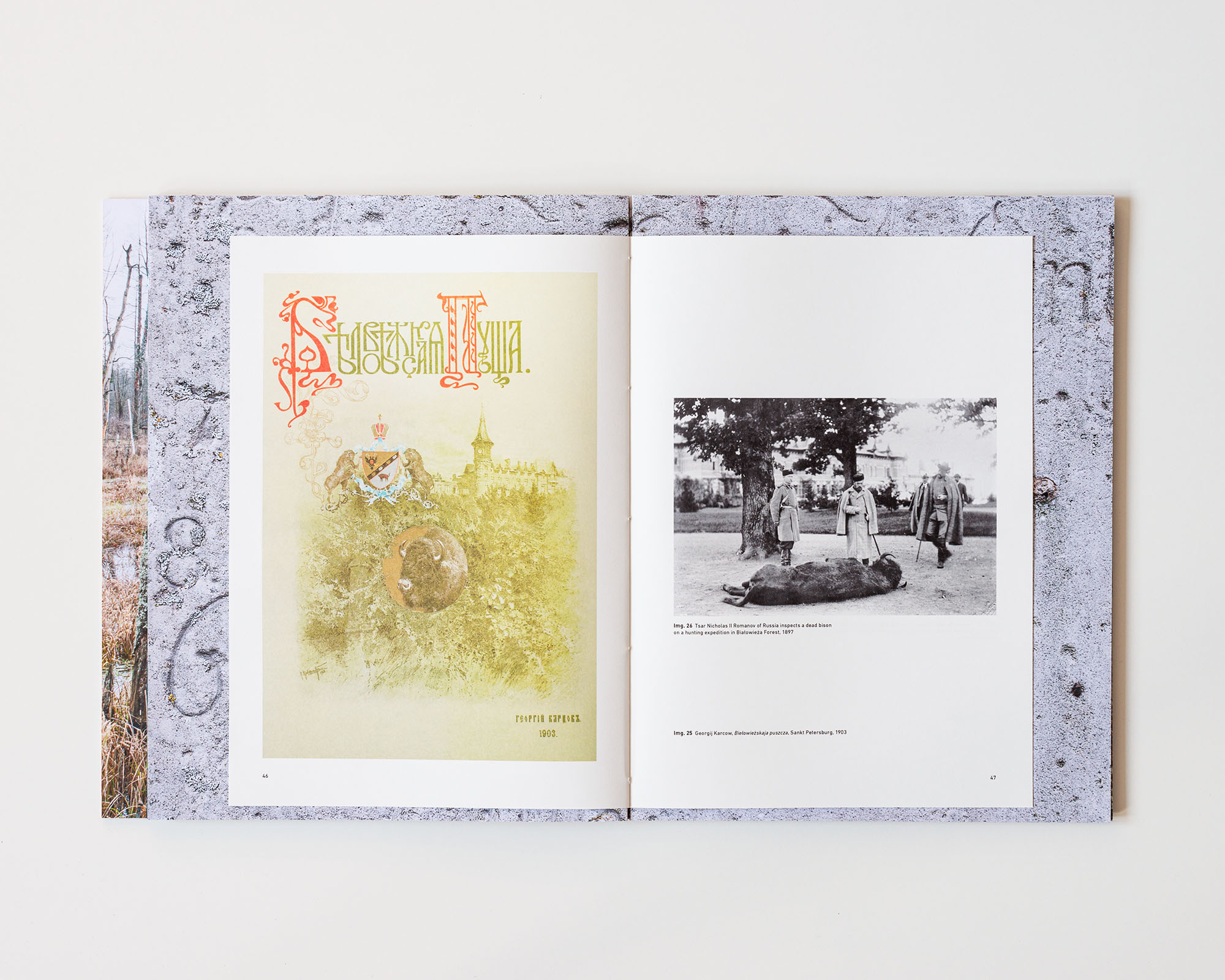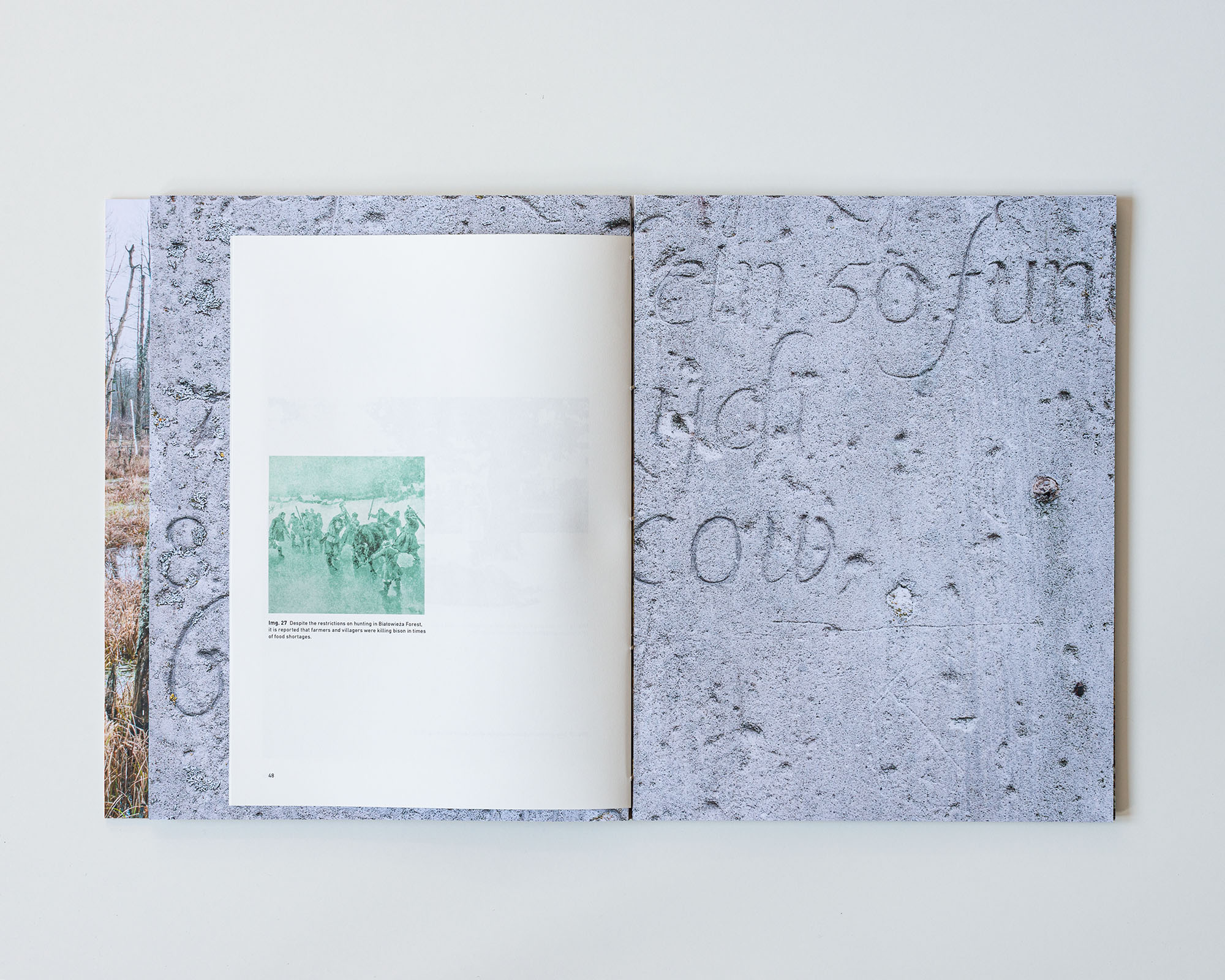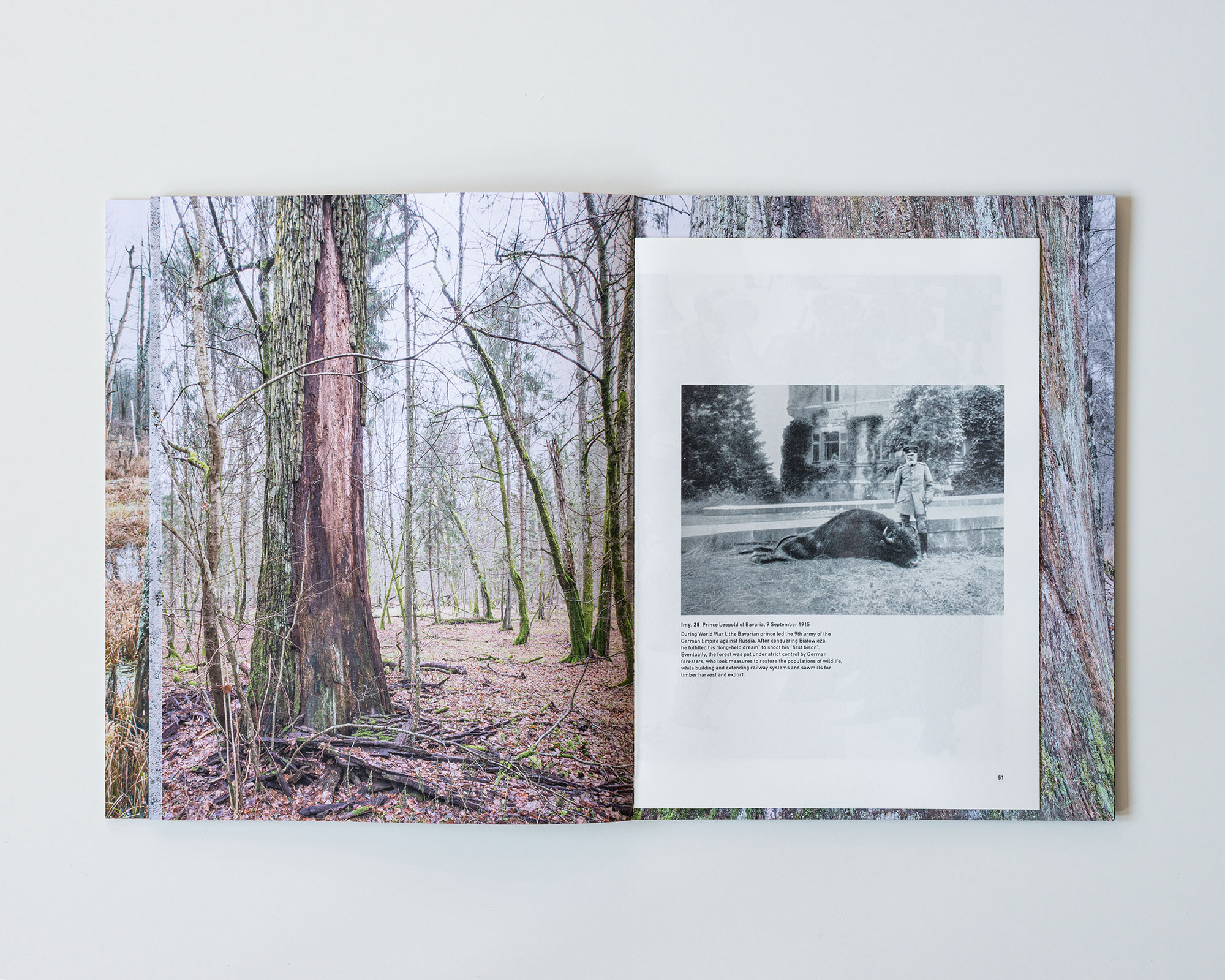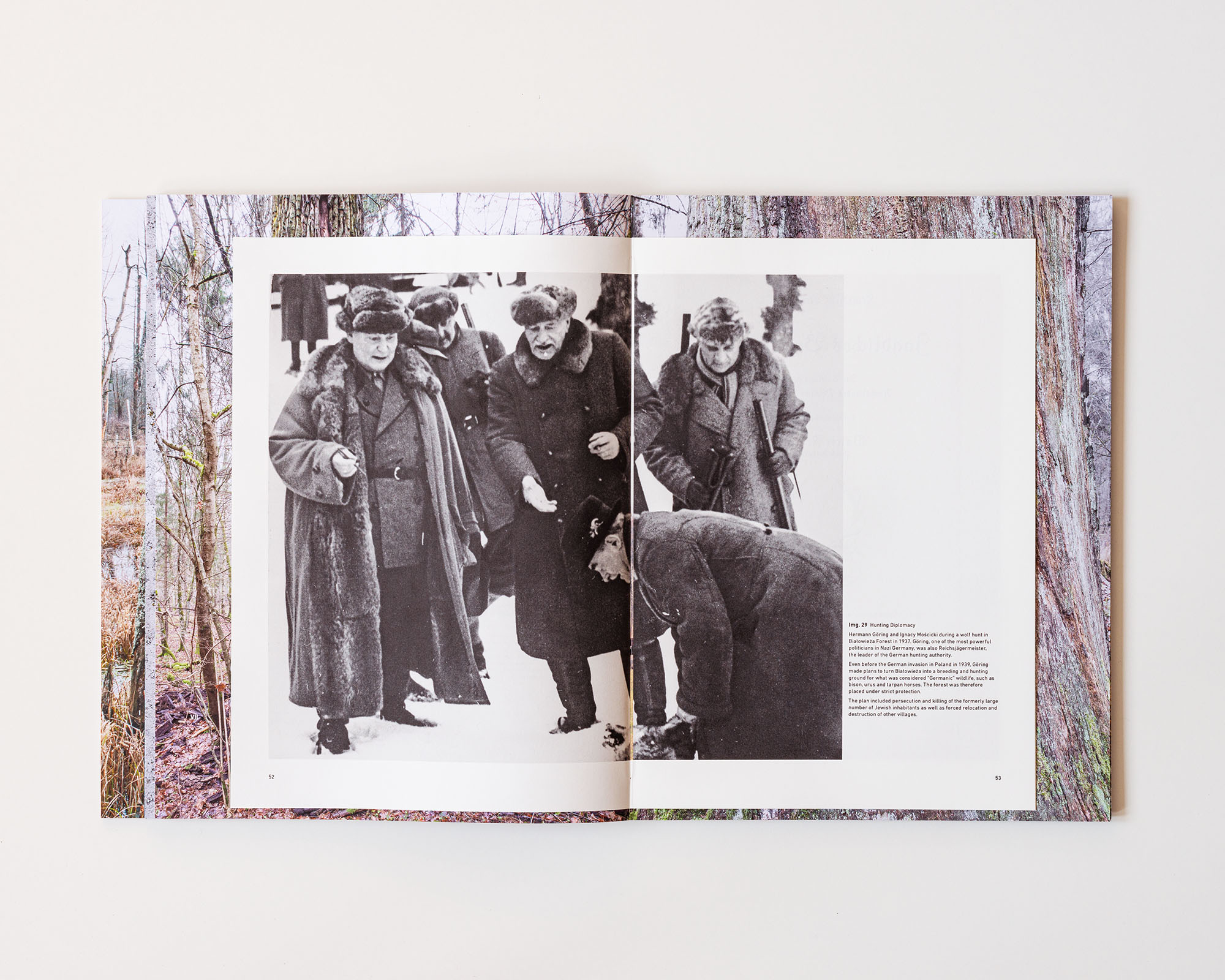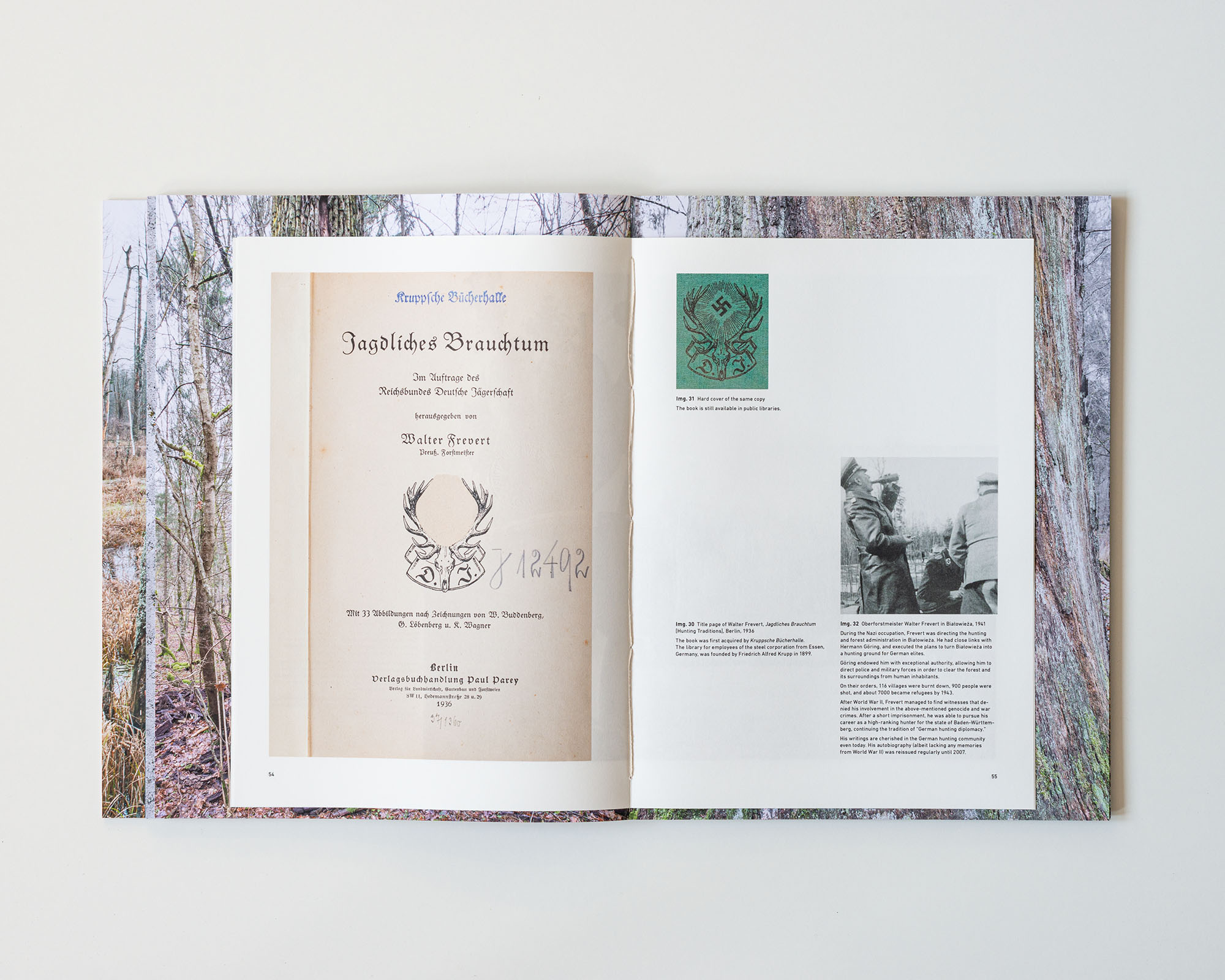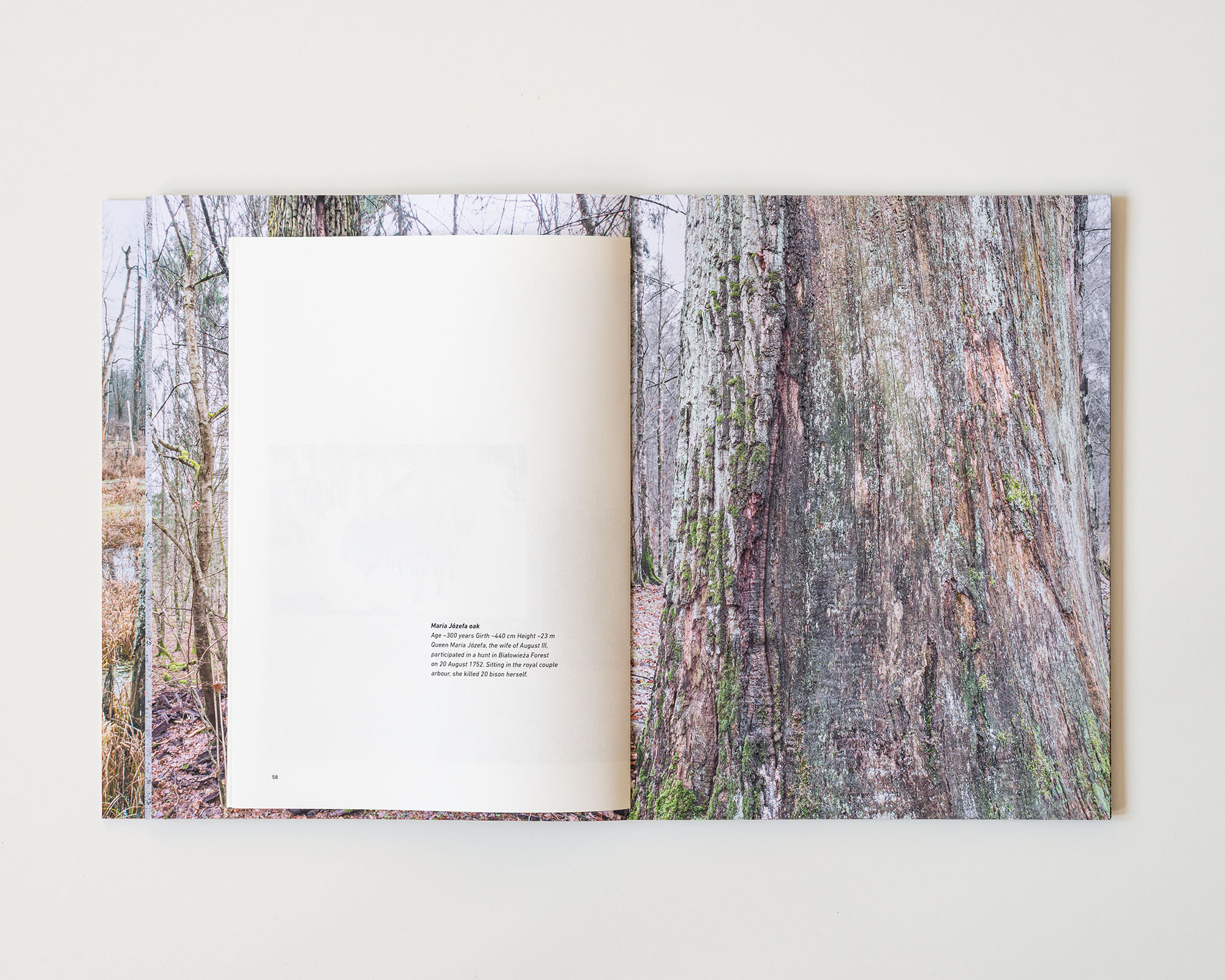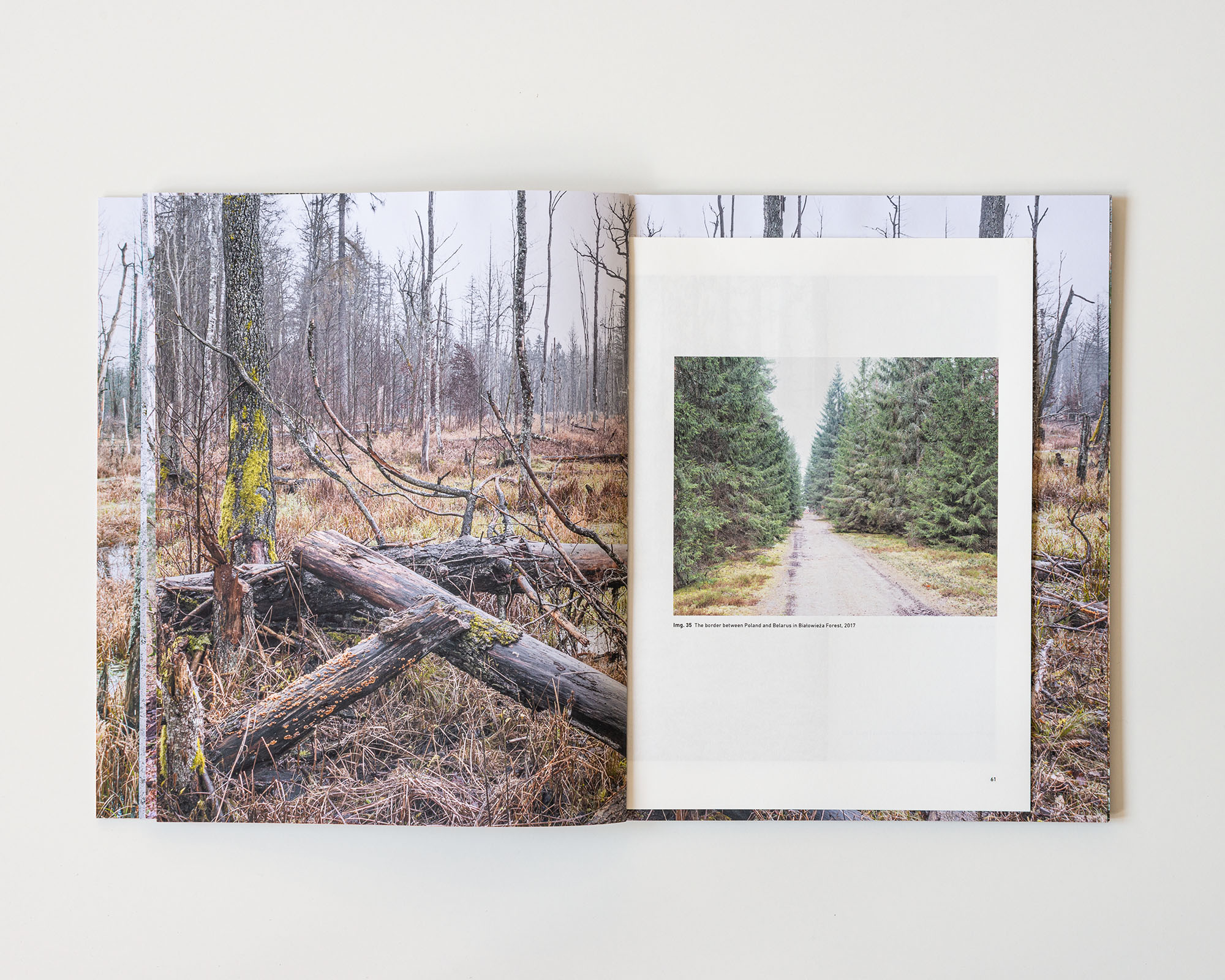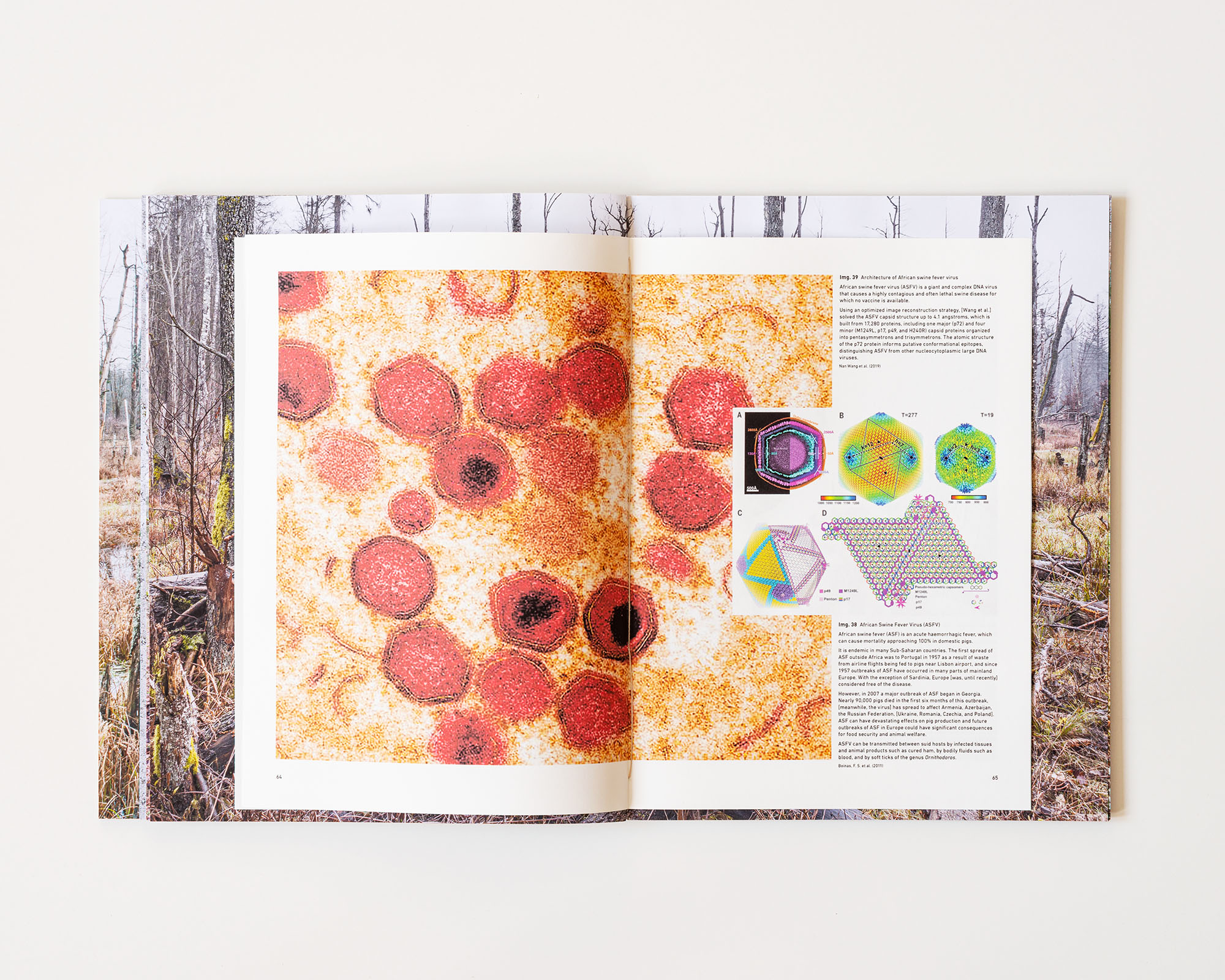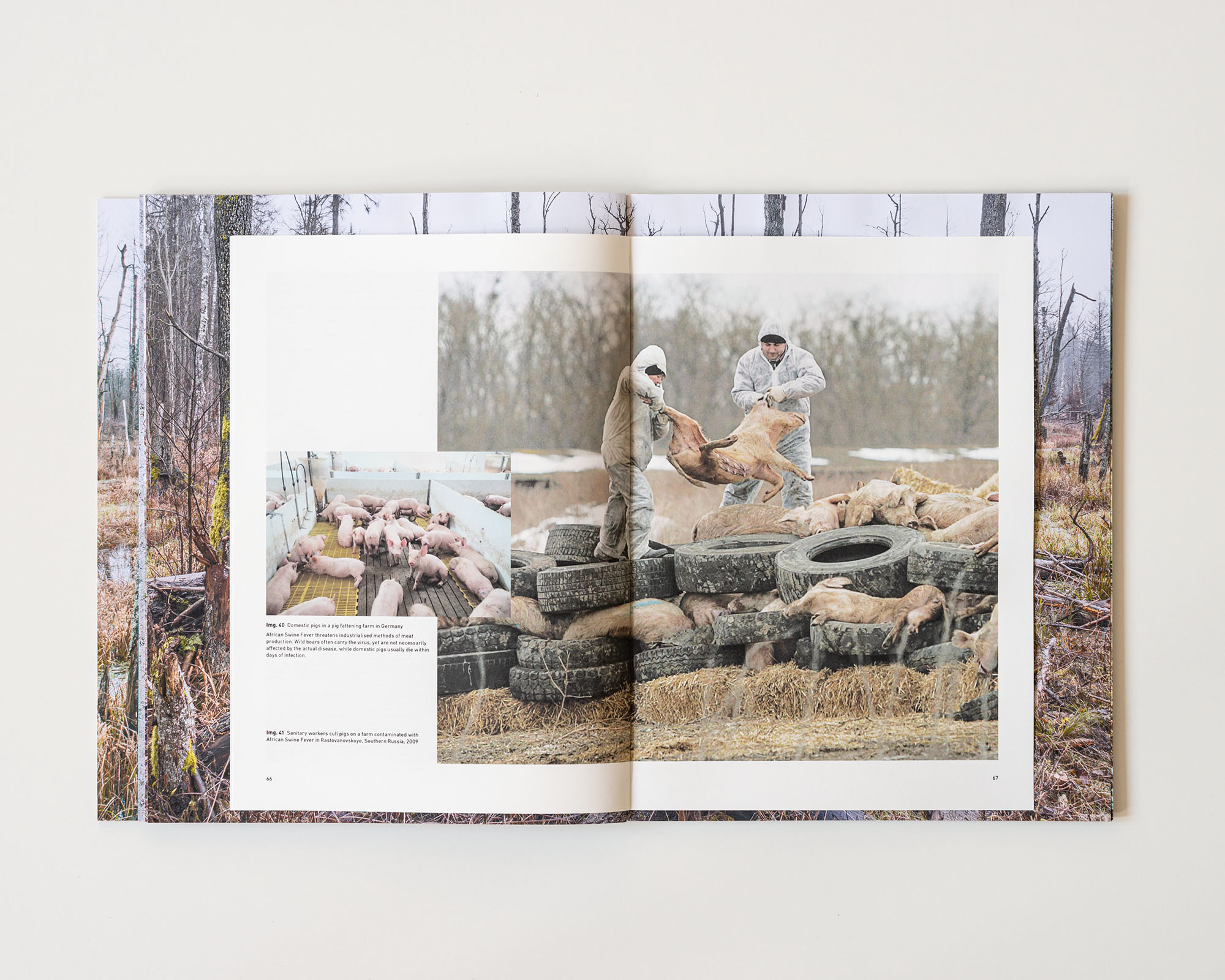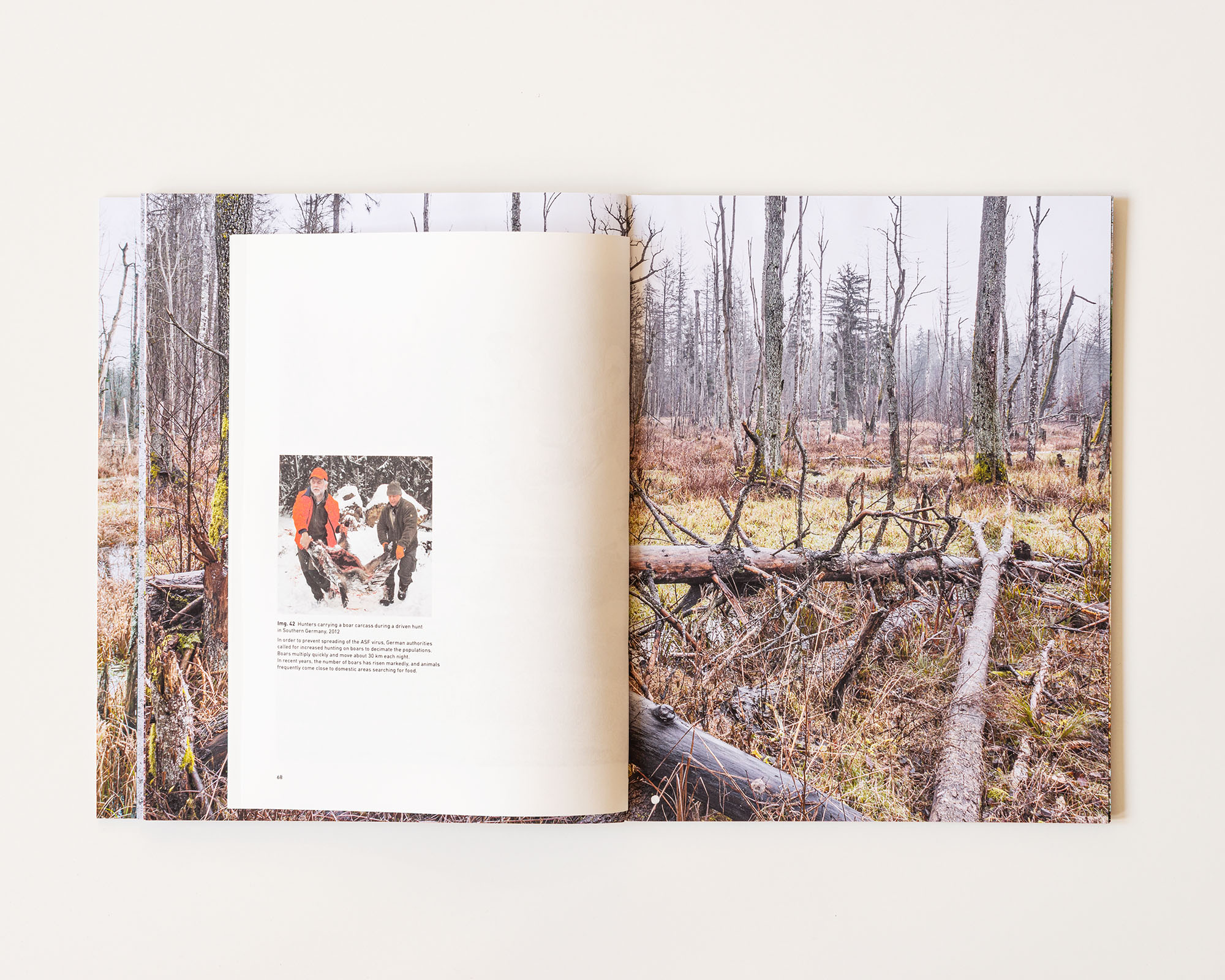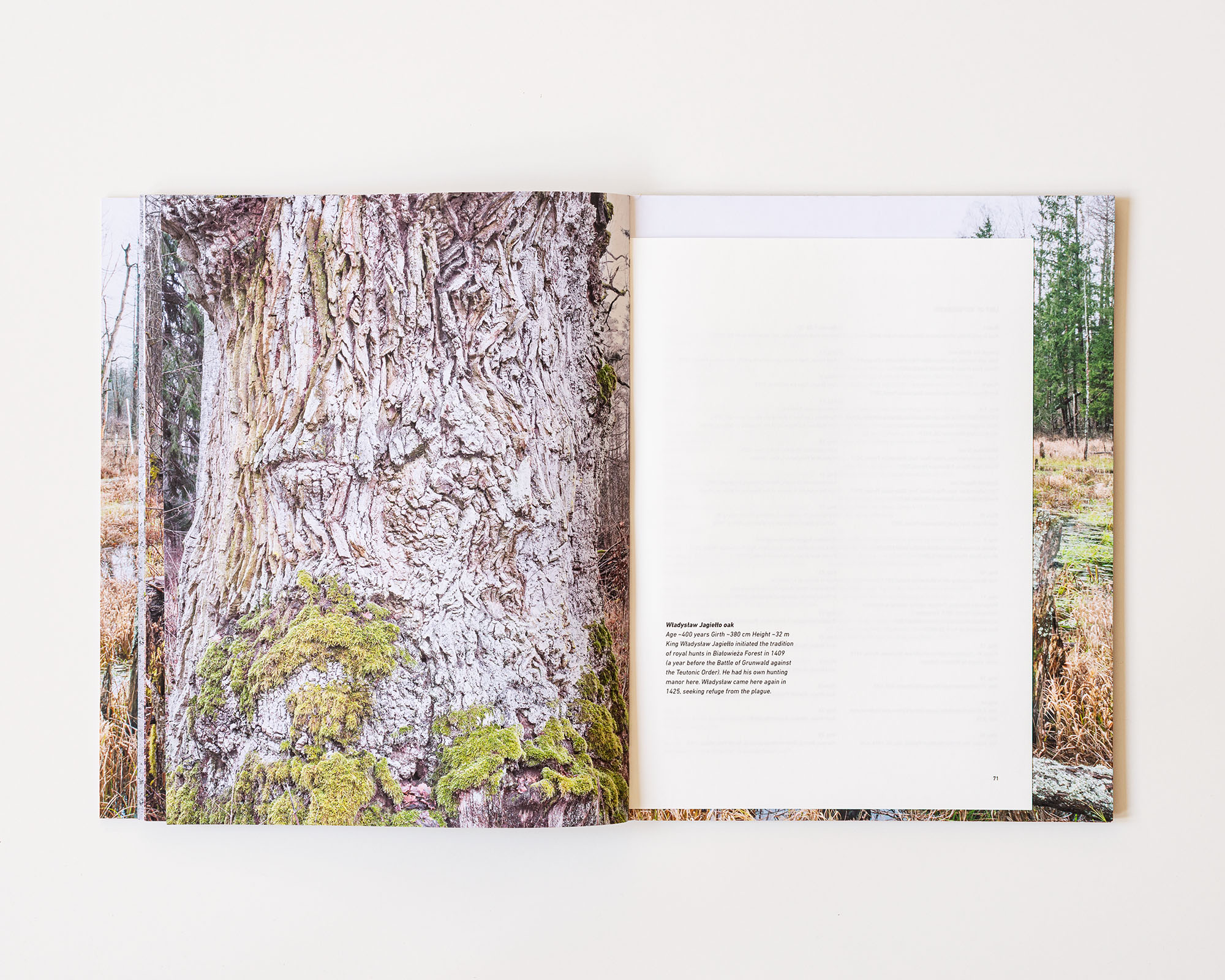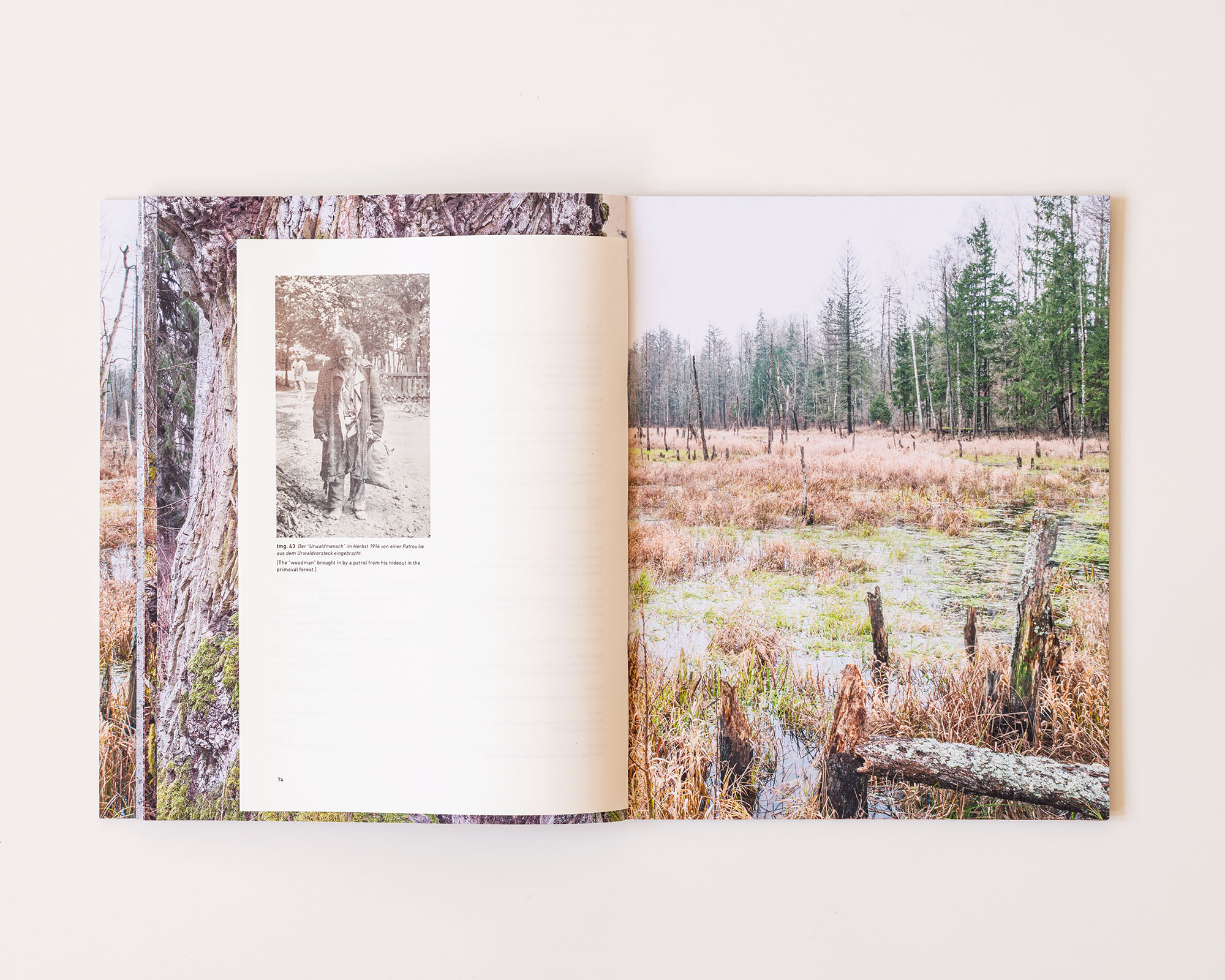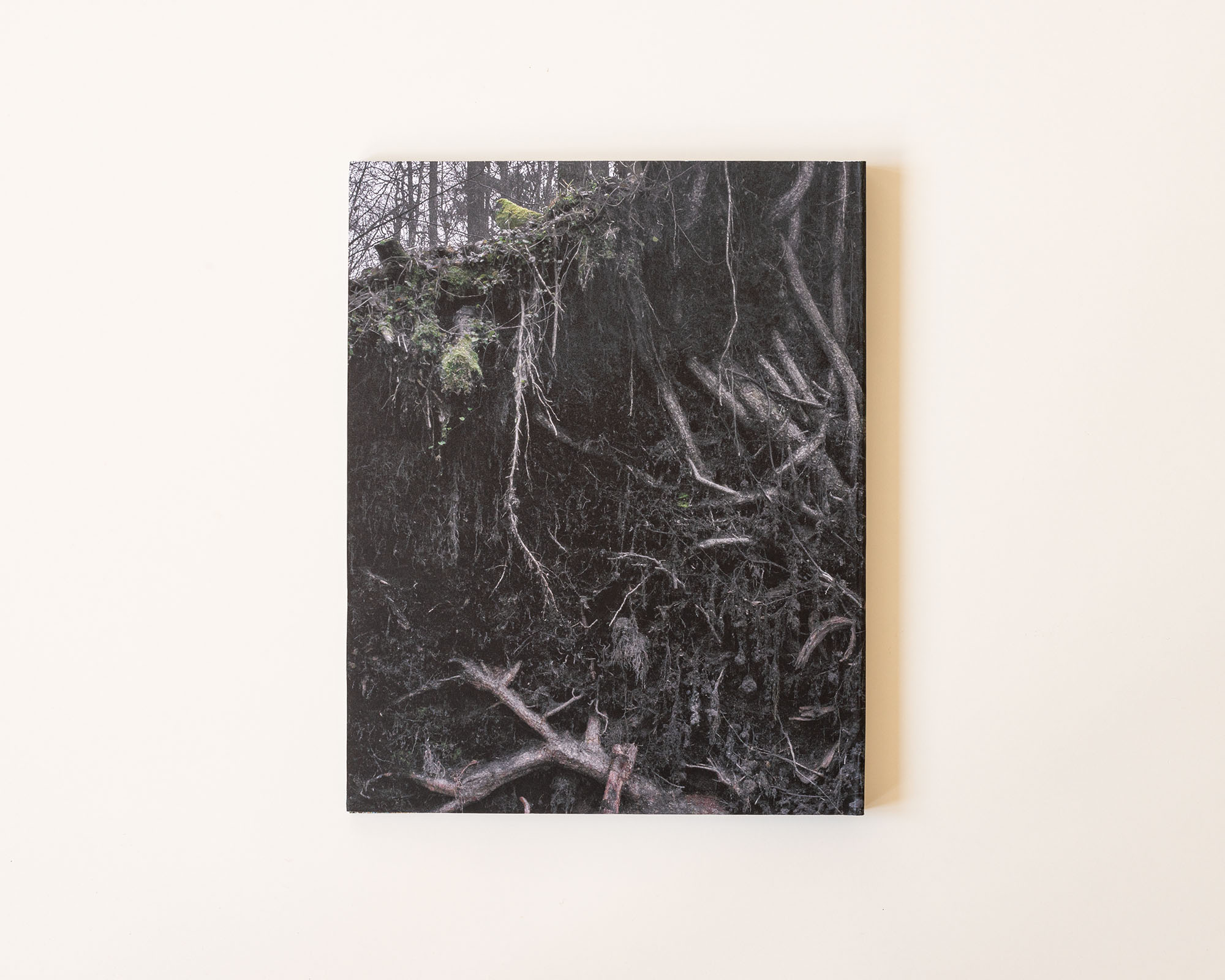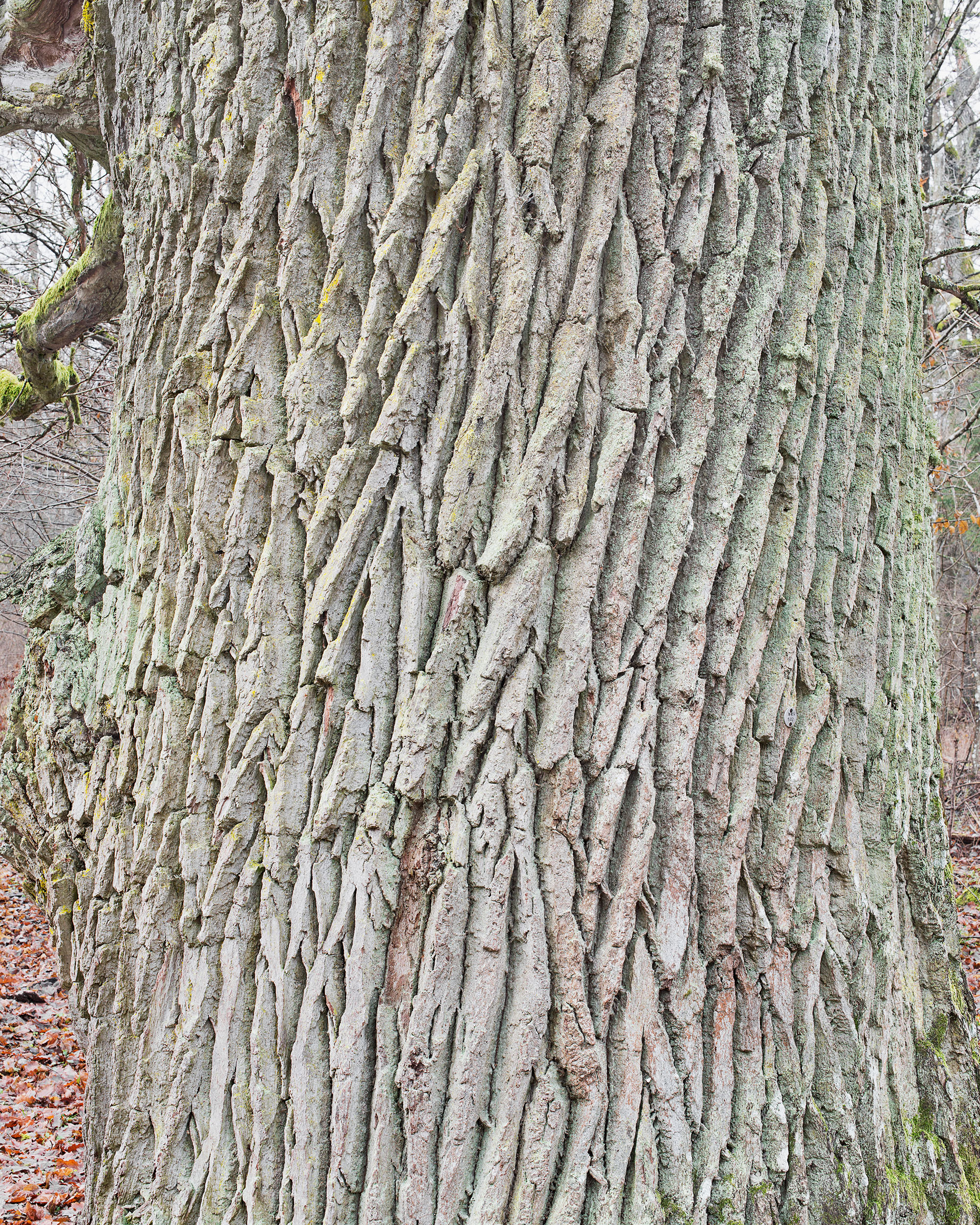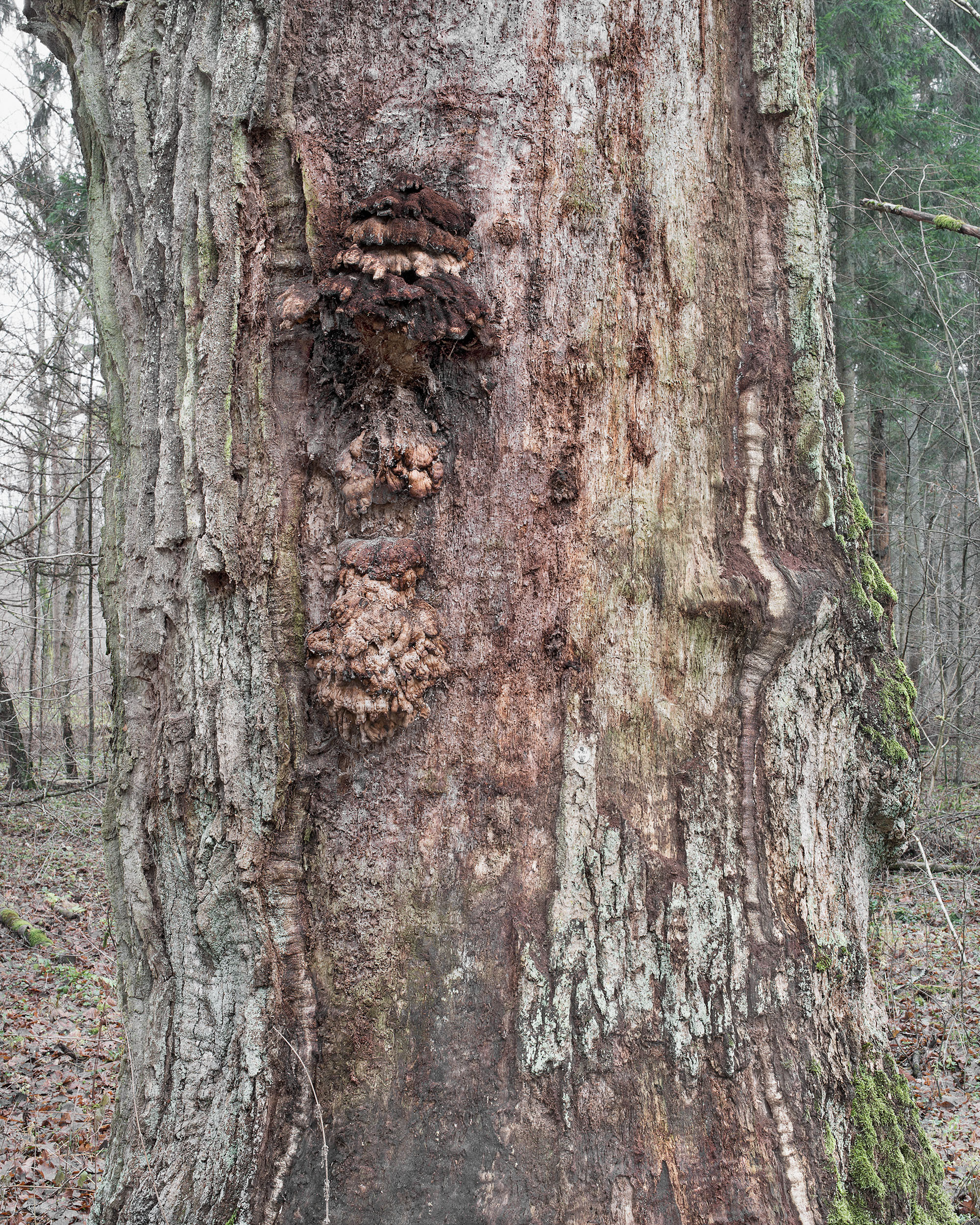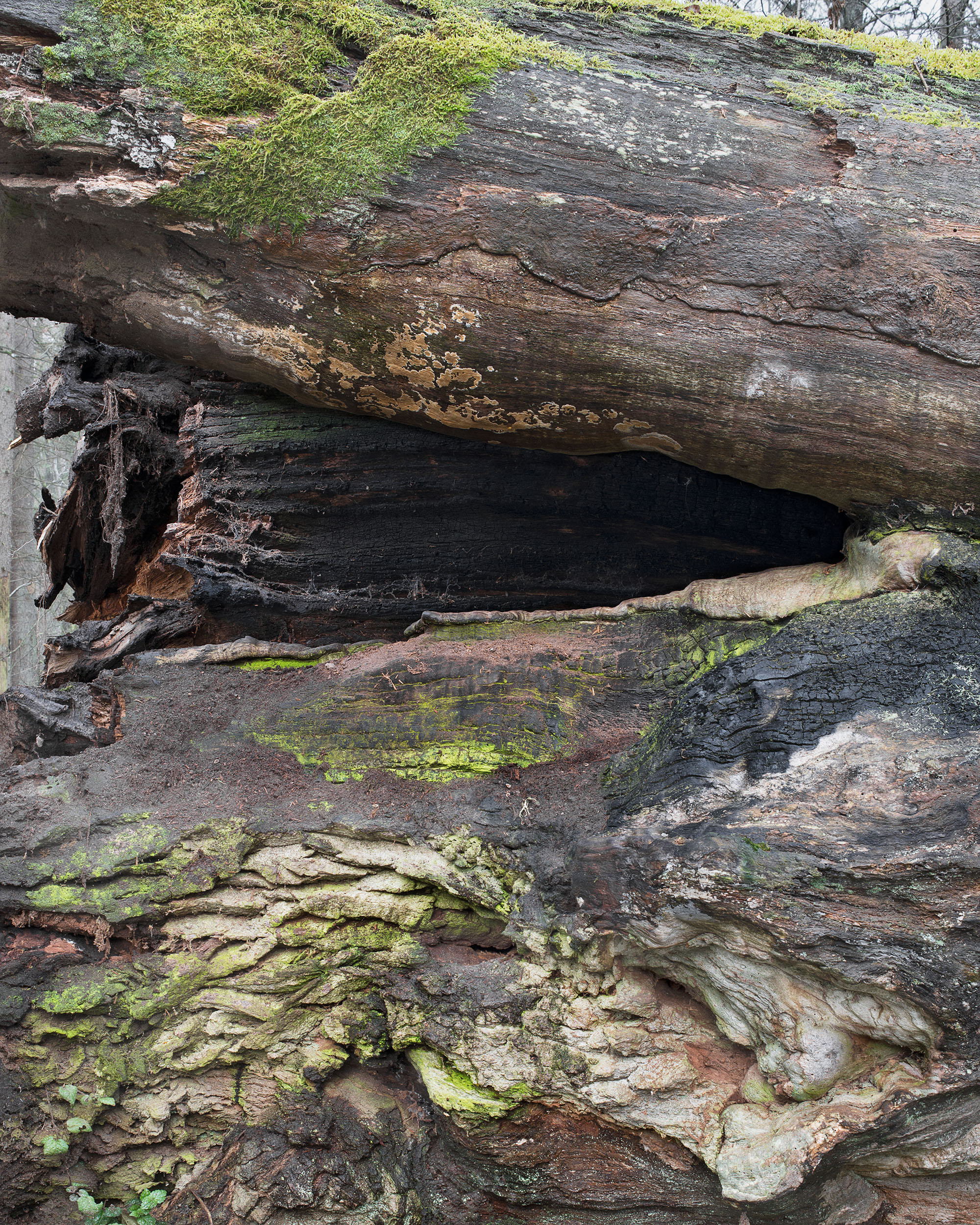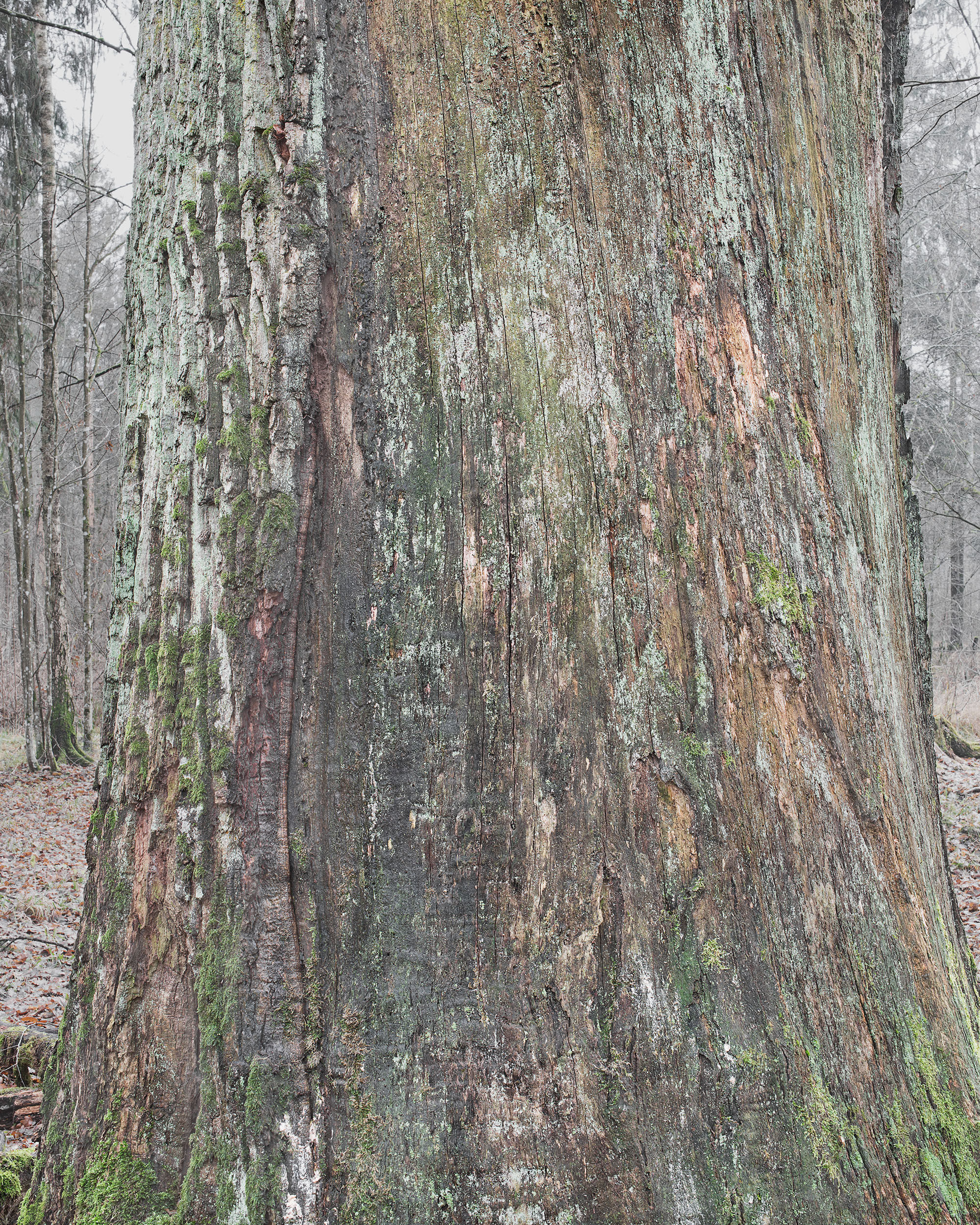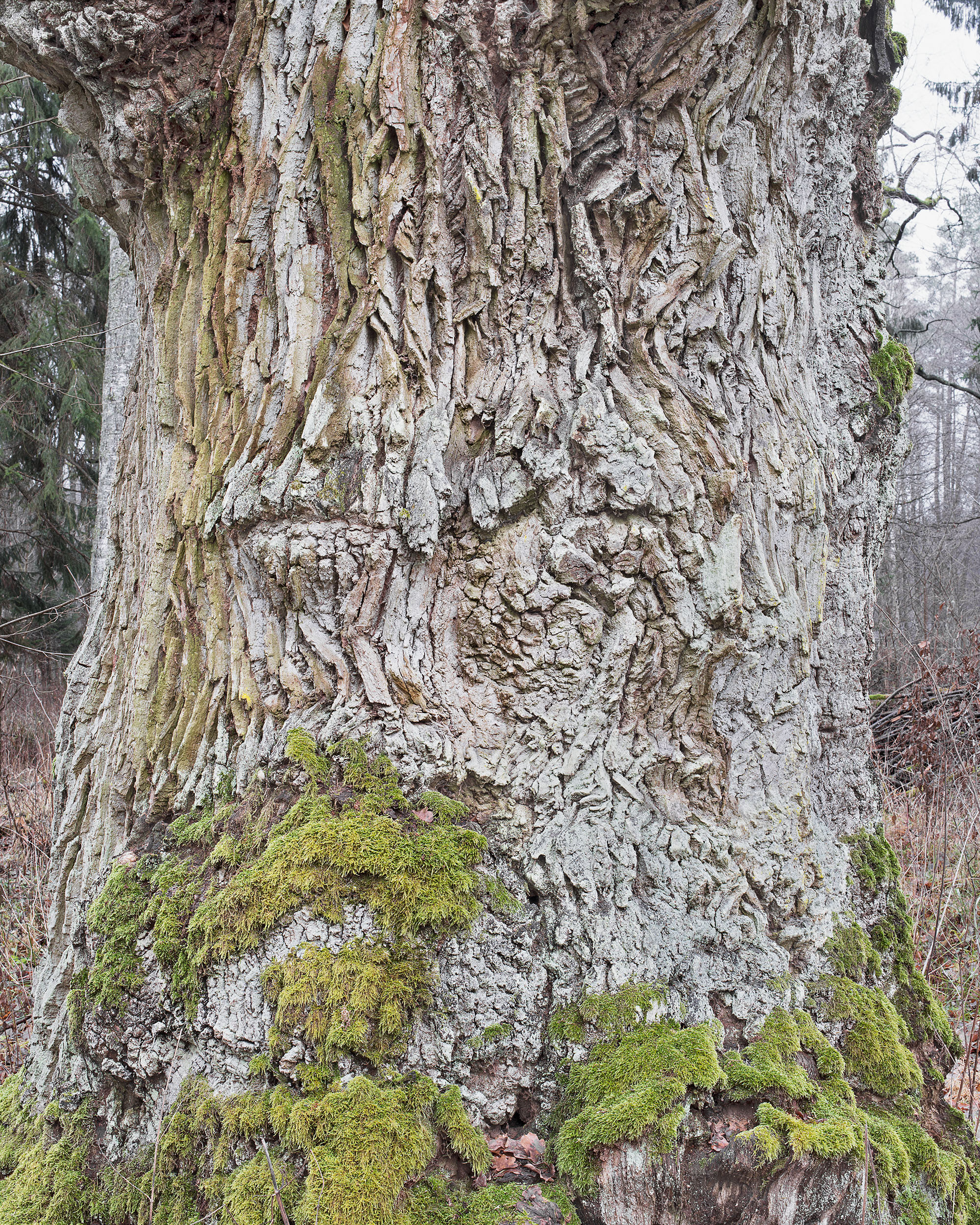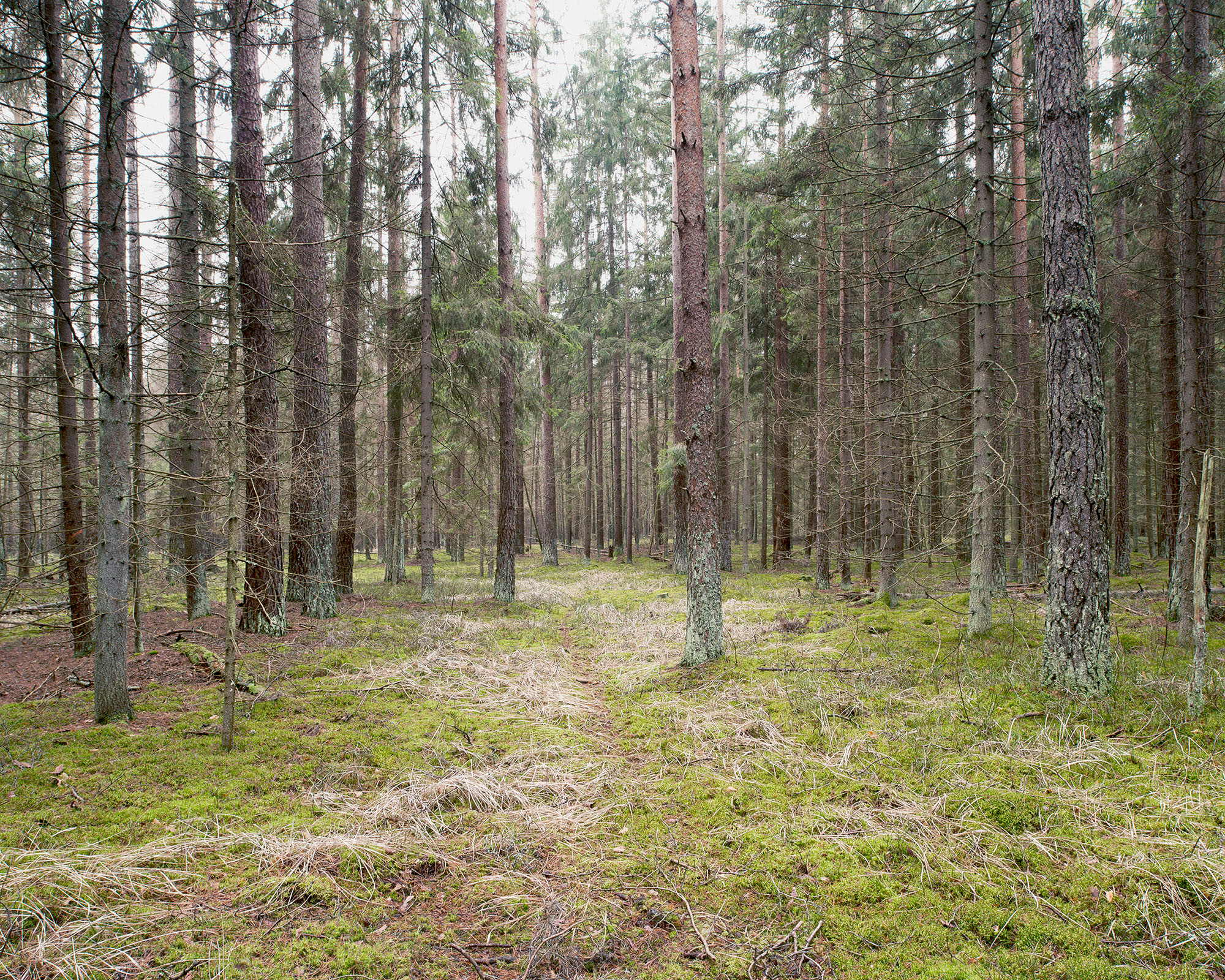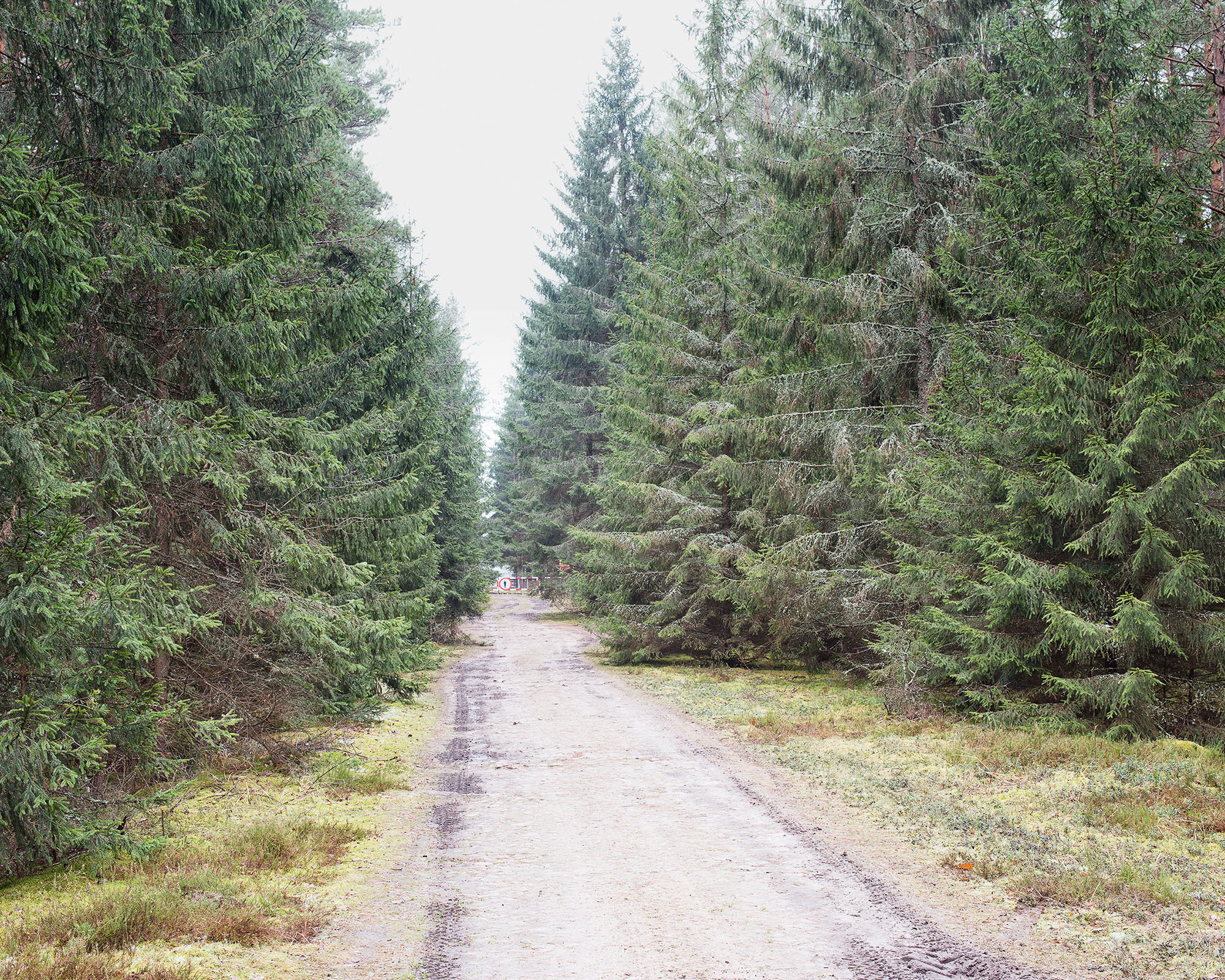The case study for DISTURBED HARMONIES [ANTHROPOCENE LANDSCAPES] touches on myths of wilderness, hunting as a symbol of power, changing occupations, colonialism, and controversial logging activities in Białowieża forest that is often referred to as Europe’s last primaeval forest.
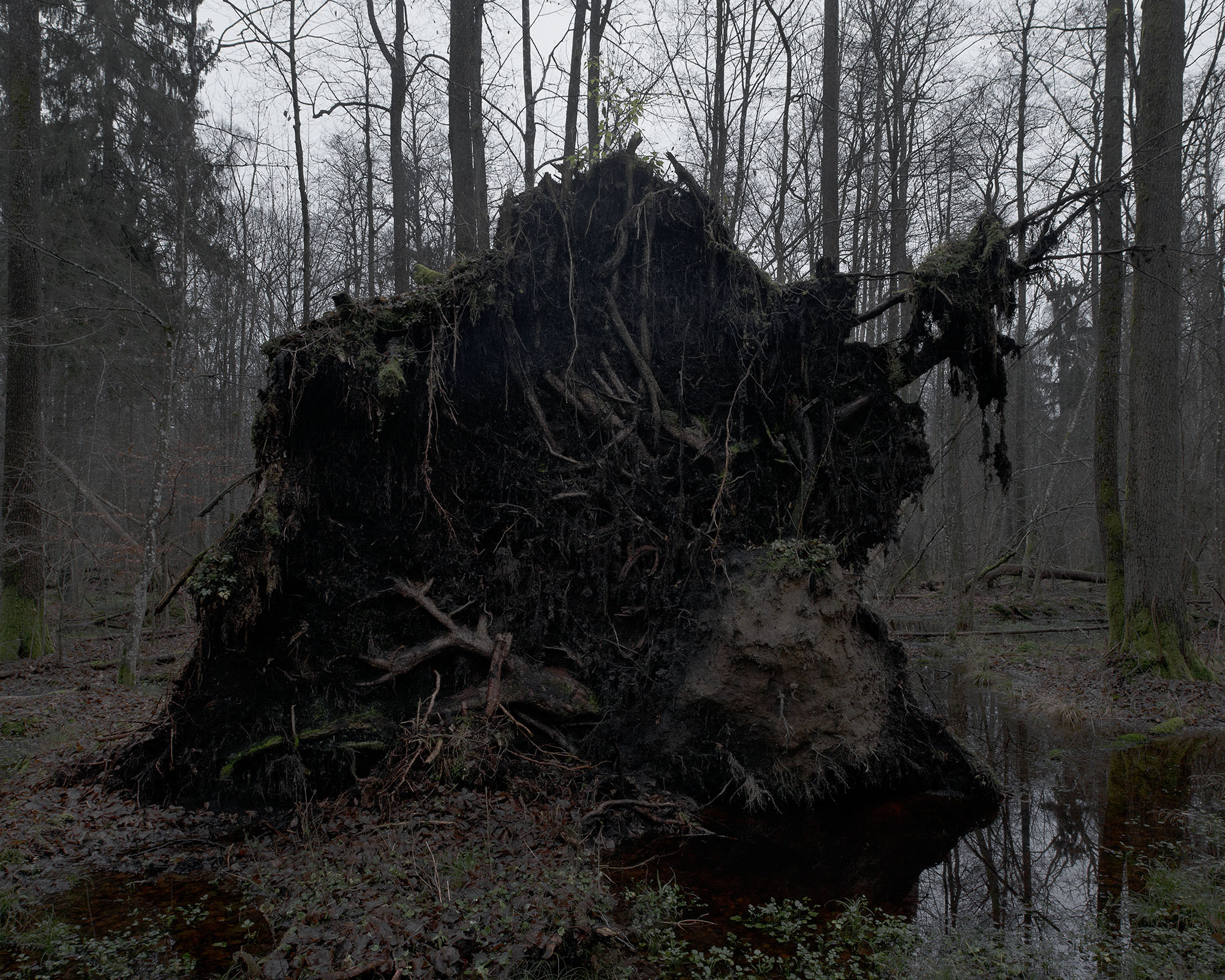
The project deals with concepts of nature and myths of wilderness by investigating the history of the Białowieża Forest at the border of Poland and Belarus. It is considered one of the last primaeval forests in Europe.
The precious ecosystem could be preserved because the forest was declared a royal hunting reserve for Polish kings in the 16th century. However, countless traces of human interference can be observed in the vast territory. Situated in the bloodlands of Europe, it witnessed changing occupations for centuries that went along with colonial-style exploitation and reached their tragic climax with the genocides committed during National Socialism.
This case study was undertaken in 2017 when the forest received international attention because the Polish government had allowed logging in formerly protected areas.
A more detailed project description is posted below.
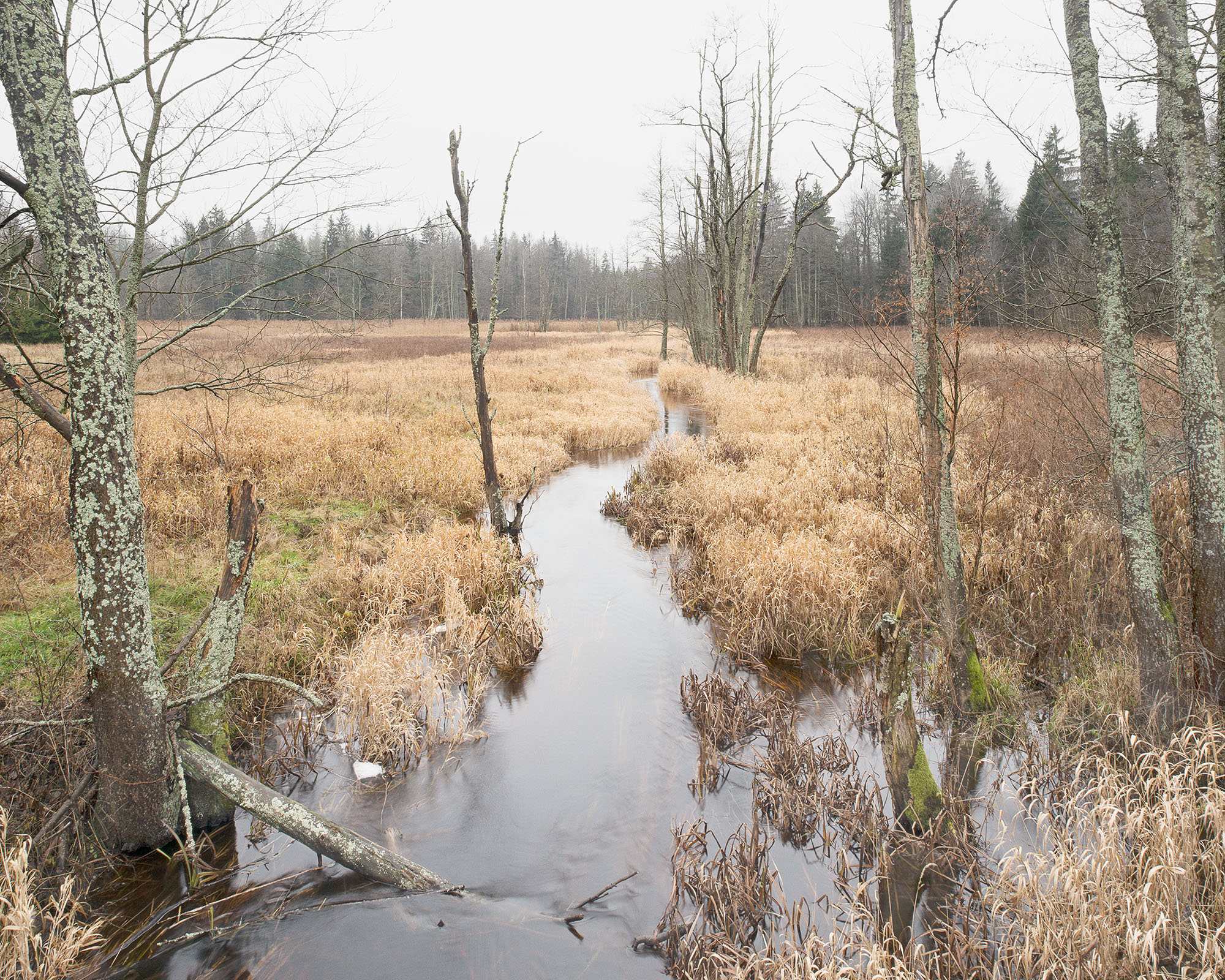

Krakow Photo Month 2018, Galeria Szara Kamienica
2018, May 25 – June 24
2– Axel Braun, Obelisk for the hunt of August III held on 27 September 1752 II, Palace Park, Białowieża, 2017
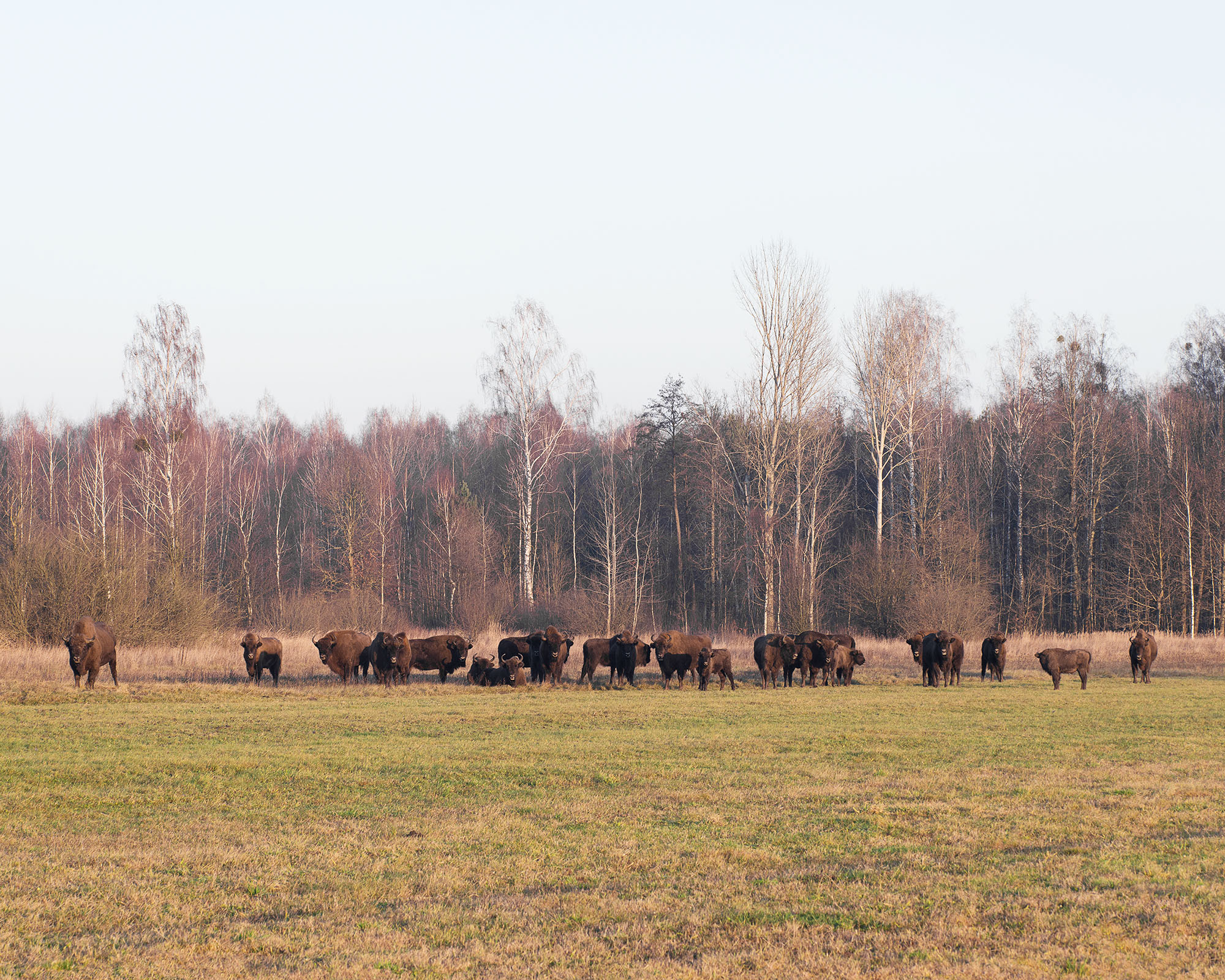
The bison population in Białowieża Forest strongly depended on winter feeding provided by humans, centuries before the complete extinction in the 1920s. Nowadays, local farmers are paid by EU funds to cut hay in traditional ways, in order to protect pastures from reforestation and provide haystacks for the animals.
Krakow Photo Month 2018, Galeria Szara Kamienica
2018, May 25 – June 24

BETALAND (group show), Galerie Conrads, Düsseldorf
2019, March 16 – April 27
(works in the background by Sven Drühl and Rosemary Laing)
A handmade artist book was created during a Covid lockdown in 2020/2021. It is a dummy for the planned anthology of artist books for DISTURBED HARMONIES [Anthropocene Landscapes].

hand-made artist book
„Lockdown-Editon“ 3 + 2 e.a., 72 pages, 250 x 325 mm
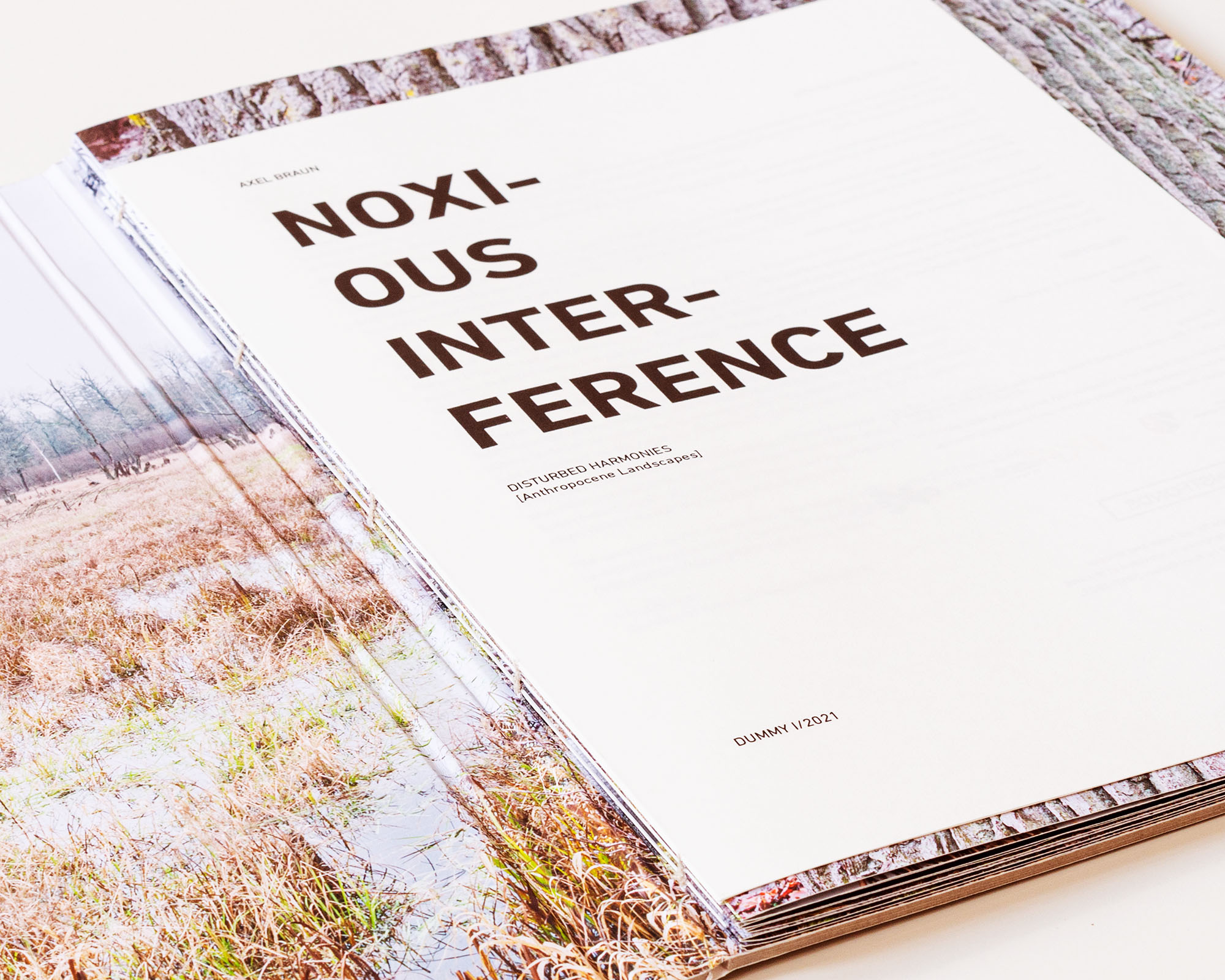
hand-made artist book
„Lockdown-Editon“ 3 + 2 e.a., 72 pages, 250 x 325 mm
hand-made artist book
„Lockdown-Editon“ 3 + 2 e.a., 72 pages, 250 x 325 mm
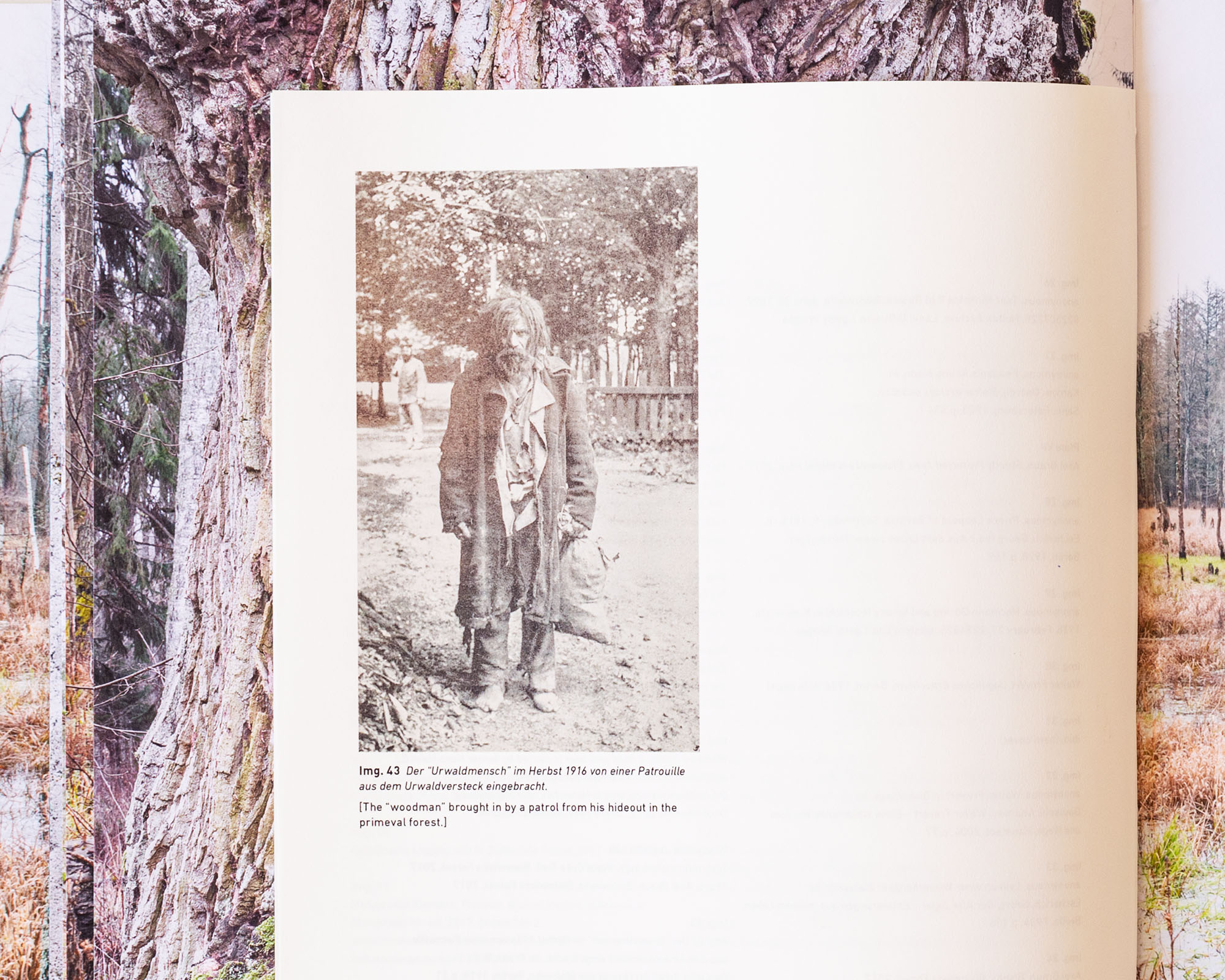
hand-made artist book
„Lockdown-Editon“ 3 + 2 e.a., 72 pages, 250 x 325 mm
hand-made artist book
„Lockdown-Editon“ 3 + 2 e.a., 72 pages, 250 x 325 mm
1 – Dąb Leszek Biały / Leszek the White oak
2 – Dąb Władysław IV (oak)
3 – Dąb Zygmunt August (oak)
4 – Dąb Stanisław August Poniatowski (oak)
5 – Dąb Maria Józefa (oak)
6 – Dąb Władysław Jagiełło (oak)
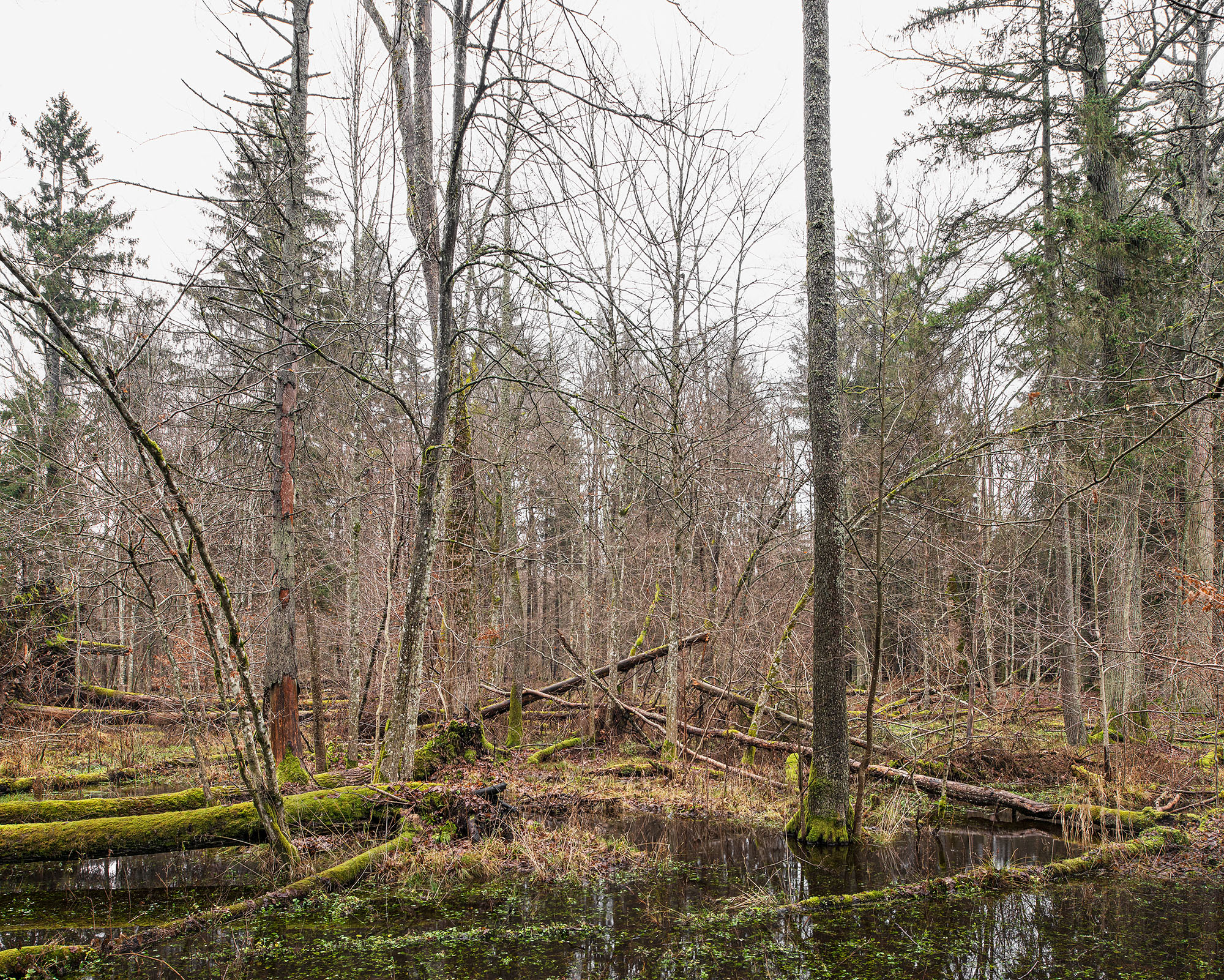
The Białowieża Forest at the border of Poland and Belarus is considered one of the last primaeval forests in Europe. Over centuries, the region and its hunting grounds were a prestigious asset for those who conquered it and became the stage for their archaic self-representation. The dominion of nature is one of humanity’s oldest and most reproduced symbols of power. Does human hybris allow for any sustainable form of coexistence?
This case study relates concepts of nature and myths of wilderness to assertions of power by investigating the forest’s history and current condition. I traced particularly violent periods based on historical images to juxtapose them with my landscape photography.
Białowieża Forest is a precious ecosystem that has only been saved from the fate of the average European landscape because it became a royal hunting reserve in the 16th century. Ever since it has been protected by strict laws to preserve its beauty for the elites. It was repeatedly referenced as an ideal of nature in Eastern European poetry and painting, became a national park of Poland in 1932 and was listed as UNESCO World Heritage in 1979. However, countless traces of human interference can be observed in the vast territory that illustrate ongoing attempts to tame the last bits of wilderness. Situated in the „Bloodlands“ (Timothy Snyder) of Europe, throughout its history, the forest and its inhabitants have witnessed changing occupations, exploitation in colonial style, and genocide during National Socialism.
My photographs of forest landscapes oscillate between natural beauty and an uncanny atmosphere, recalling violent chaos and potential threats imposed by wilderness. In the project, they form the background for historical sources while aiming for reflections of our collective imagination of nature. During this fieldwork stage in 2017, I furthermore produced a “portrait series” of “royal oaks”. The forest received international attention back then, as the Polish government allowed logging in formerly protected areas. Białowieża is famous for its ancient oaks. Some reach ages of multiple centuries. However, their numbers are decreasing, and many of them are decaying. In a grove with particularly old specimens, selected trees have been named after Polish and Lithuanian kings who played crucial roles in the history of the forest. Against the backdrop of the nationalistic atmosphere of the time, the personification of trees appeared as a nostalgic illustration of the country’s powerful history that sadly coincided with the extensive destruction of its natural resources and heritage.
In 2020, the forest became the site of a humanitarian crisis caused by Alexander Lukashenko‘s strategy to transport refugees to the EU border while Polish border guards denied them entry and used illegal push-backs. Meanwhile, the borderline is entirely fenced off and declared a restricted area.
During my fieldwork in 2017, I could still visit the borderline where, at the time, another phenomenon of border crossings caused concern: wild boar had imported the African Swine Fever virus via Russia to Poland and further west. While not affecting wild animals, the virus can kill domestic pigs within hours. Thus, the disease seriously threatens industrial food production and its problematic housing conditions. Like other recent and future pandemics, it can be seen as a revenge of nature against a species that believed it could contain and exploit natural resources according to its (so often) unreflected desires.

